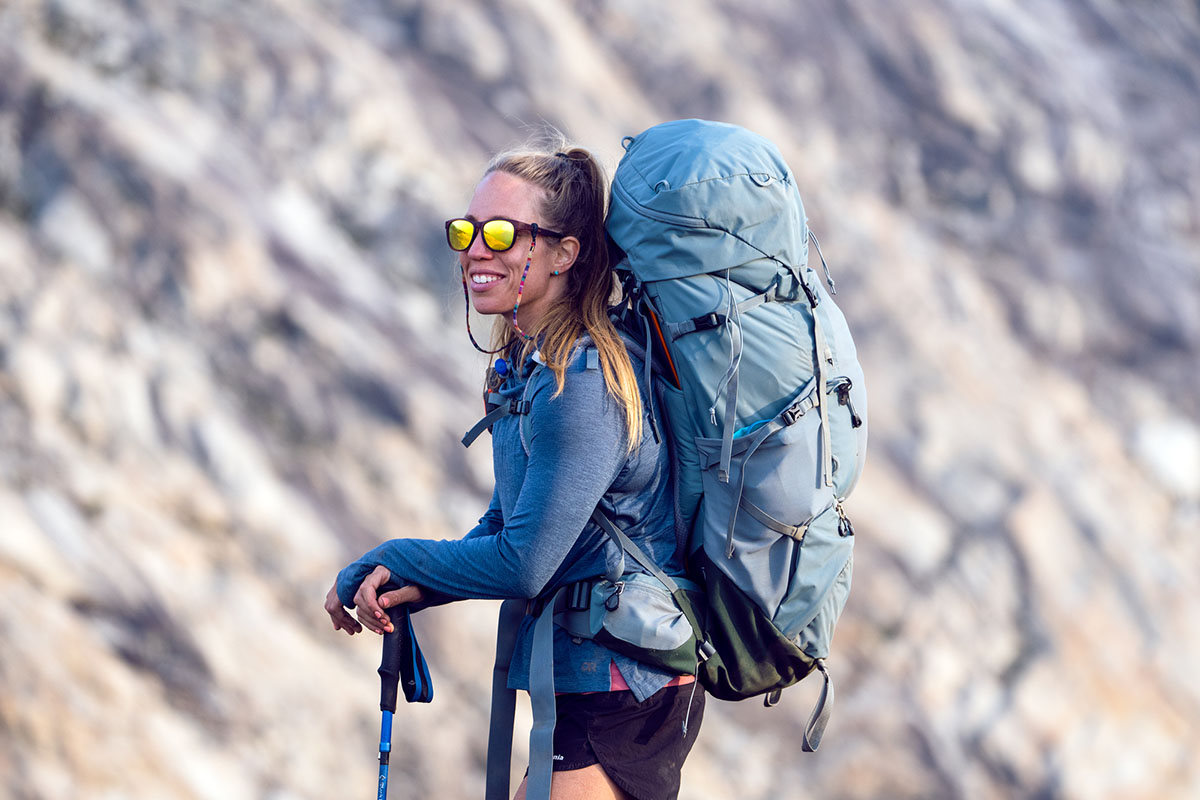
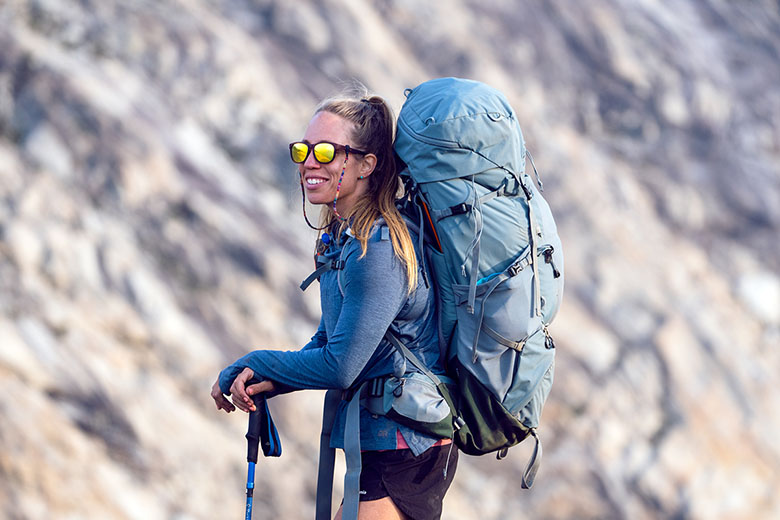
Choosing a suitable backpacking pack can be a daunting task, with myriad models touting different capacities, organization, suspension designs, and more. Our breakdown—written by women, for women—will help you identify your personal style of backpacking and which category of pack is best for you. While not every option below is specified as a dedicated women's model, all of our picks have been extensively tested and vetted as comfortable and well fitting for female backpackers. Below are our favorite women’s backpacking packs of 2025, including reliable all-rounders, feature-rich heavy haulers, and streamlined ultralight models. For more background information, see our comparison table and buying advice below the picks. We’ve also compiled a list of the best backpacking packs, which covers both men’s and women’s designs.
Editor’s note: We updated this guide on April 30, 2025, to move the Black Diamond Beta Light up and move the REI Trailmade down in our rankings, as well as add the Rab Hyperon and Gregory Maven to the lineup. As always, we also swept the guide to ensure all information was up to date at the time of publishing.
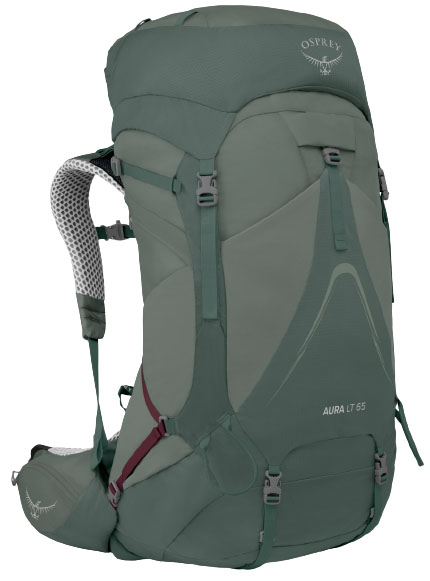 Weight: 4 lb. 0.2 oz.
Weight: 4 lb. 0.2 oz.
Fabric: Nylon (210D & 500D)
Capacities: 50, 65L
What we like: The comfort, durability, and performance of a high-end backpacking pack in a reasonably light package.
What we don’t: You give up some pockets and organizational add-ons; there are plenty of lighter options available.
The best overall pick isn’t always an obvious choice, but the Aura AG LT 65 is a runaway favorite thanks to its well-balanced design. With the LT, Osprey took the organization, comfort, and durability of a high-end backpacking pack and streamlined it, removing all superfluous bells and whistles. What remains is everything you need (and nothing you don’t) for brief overnights to week-long sagas, including best-in-class comfort, convenient pockets and storage, reliable weather resistance (including a rain cover), and top-of-the-line ventilation. The Aura AG LT also features an adjustable torso length, and unlike true lightweight models doesn’t compromise on durability (it’s built with a substantial 500D base and 210D body). At a reasonable 4 pounds and $290, you’d be hard-pressed to find a better combination of price, weight, and performance.
But for some backpackers, the Aura AG LT is too much of an all-rounder. Those who like a lot of pockets and organization will appreciate a more featured design like the Gregory Deva 70 below (or the standard Aura AG 65, which adds secondary side-zip access to the main compartment, one more lid pocket and two front pockets, and dedicated sleeping bag storage). On the other hand, the Aura AG LT is too heavy to slot into the lightweight category, and weight-conscious hikers might want to consider alternatives like the ULA Ultra Circuit 68 (2 lb. 4.8 oz.), Hyperlite Southwest 55 (1 lb. 13.9 oz.), or Osprey's own Eja 58 (2 lb. 13.2 oz.) below. Still, the Aura AG LT finds an excellent middle ground between the two extremes, making it an easy recommendation for the majority of backpackers—new and seasoned alike.
Read more: Osprey Aura AG LT review
See the Osprey Aura AG LT 65
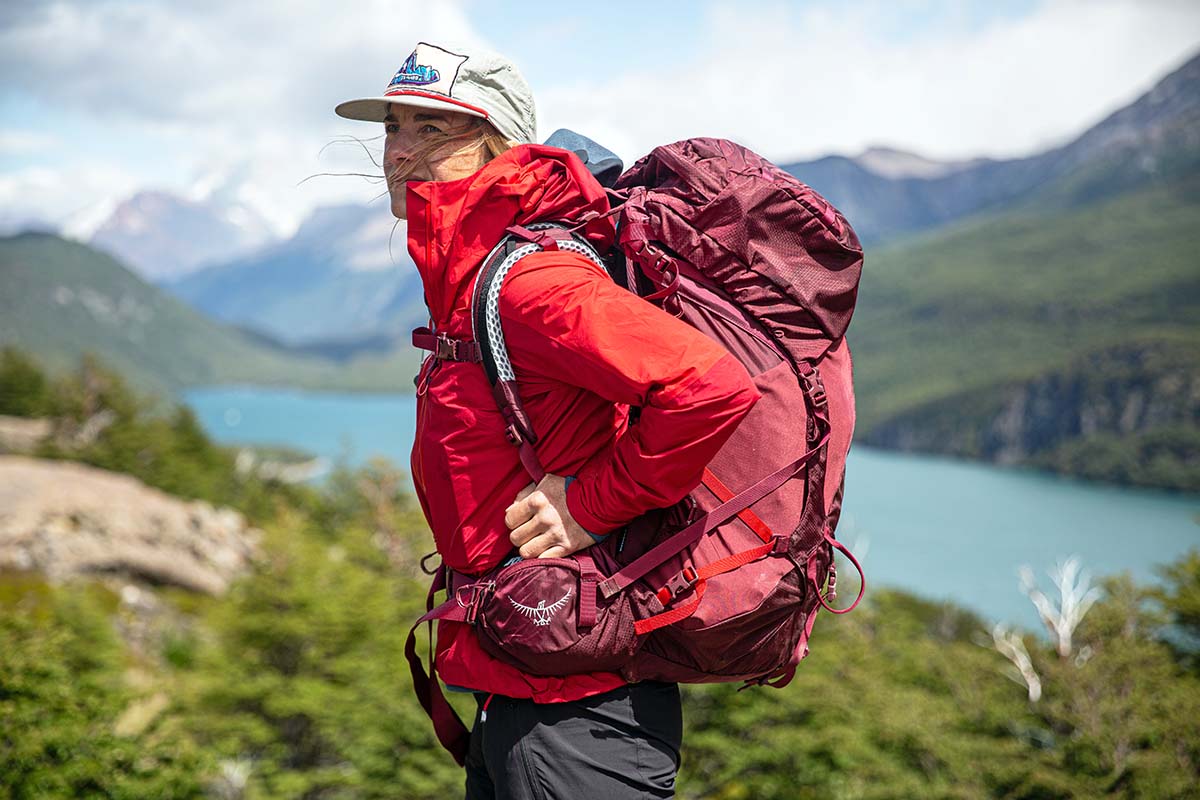
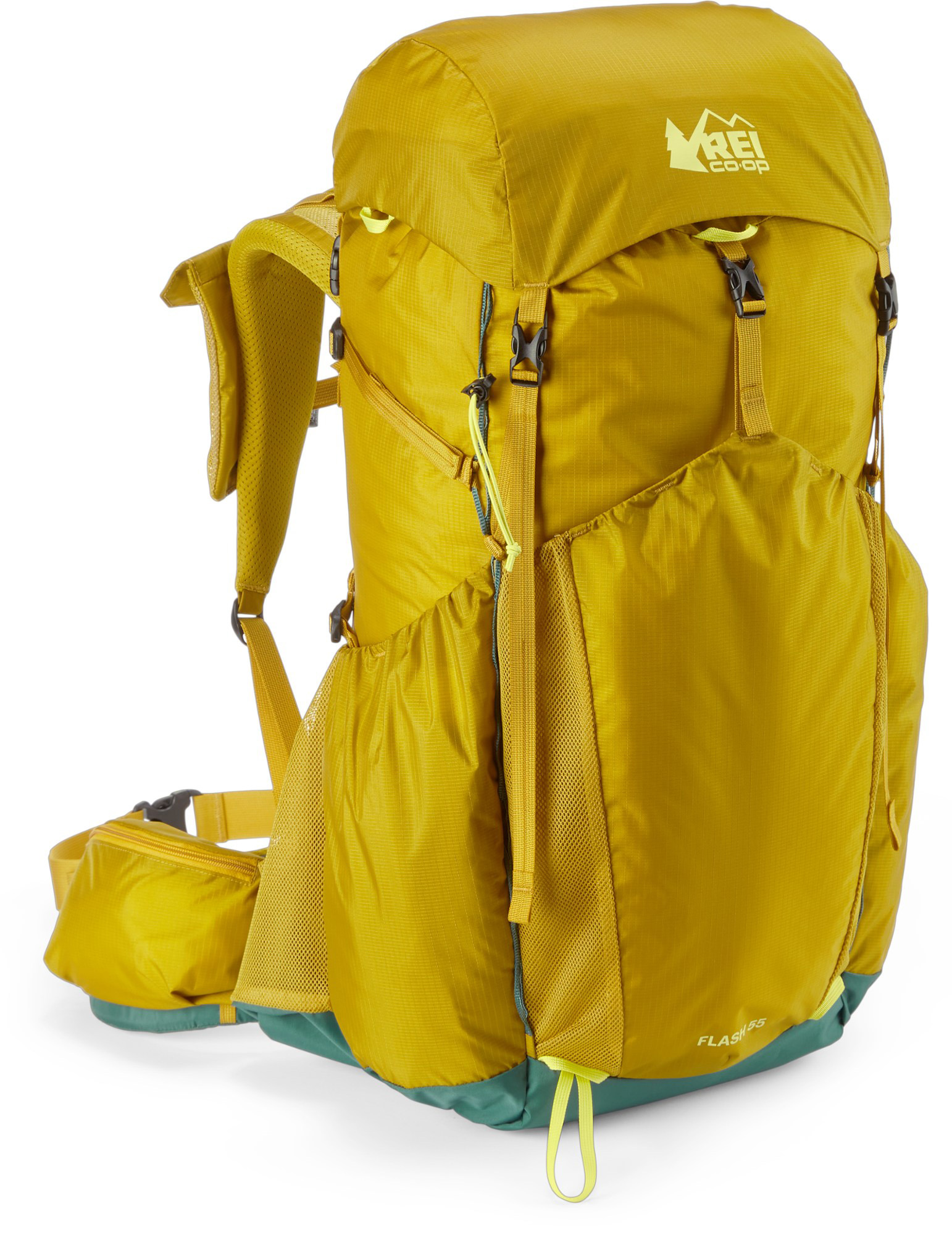 Weight: 2 lb. 12.0 oz.
Weight: 2 lb. 12.0 oz.
Fabric: Nylon (100D & 210D)
Capacity: 55L
What we like: Relatively inexpensive; great adjustability and customization.
What we don’t: Materials and load limit are a step down from the Osprey Eja or Gregory Facet.
REI’s packs are reliably high on value, but they aren’t usually standouts in terms of performance. However, we’ve been pleasantly surprised by the Flash 55—enough so that we moved it up our a couple seasons back, dethroning the brand's cheaper Trailmade below as our favorite budget design. Importantly, despite its reasonably low price, the Flash is competitively light (on par with the Osprey Eja and Gregory Facet below) and features a variety of convenient features, including four large side pockets (great for longer items like tent poles and a tall water bottle) and a generous front dump pocket. We also appreciate the convenient roll-top closure, which makes it easy to compress the pack down when you're hauling a smaller load. And the Flash is hallmarked by a range of customizable features that are easy to remove and reattach, including compression straps, two hipbelt pockets, and a shoulder strap pocket (dropping all of them shaves 7 oz.). For just $199, this adds up to a steal for weight- and price-conscious backpackers alike.
We took the Flash 55 on a three-day trek through Wyoming's Wind River Range at the end of last summer and came away with a lot of praise. Despite its affordable price tag and competitive weight, the Flash handled a full load surprisingly well, even as we approached its 30-pound limit. We also found storage to be mostly adequate, although the single lid pocket and lack of secondary access to the main compartment detract from the otherwise well-rounded layout. We also weren't huge fans of the shoulder strap pocket, which is prone to falling off, difficult to reattach, and barely fit our iPhone in its case (we ended up removing it partway through the trip). But it’s hard to be overly critical at this price point, especially considering the Flash’s generous customization options and decidedly modern-feeling design (both of which are uncommon among sub-$200 packs). A final bonus: The latest model is available in four sizes, including a unique extra-small torso with a medium hipbelt, which means it should work for a wide range of body types.
Read more: REI Co-op Flash 55 review
See the REI Co-op Flash 55
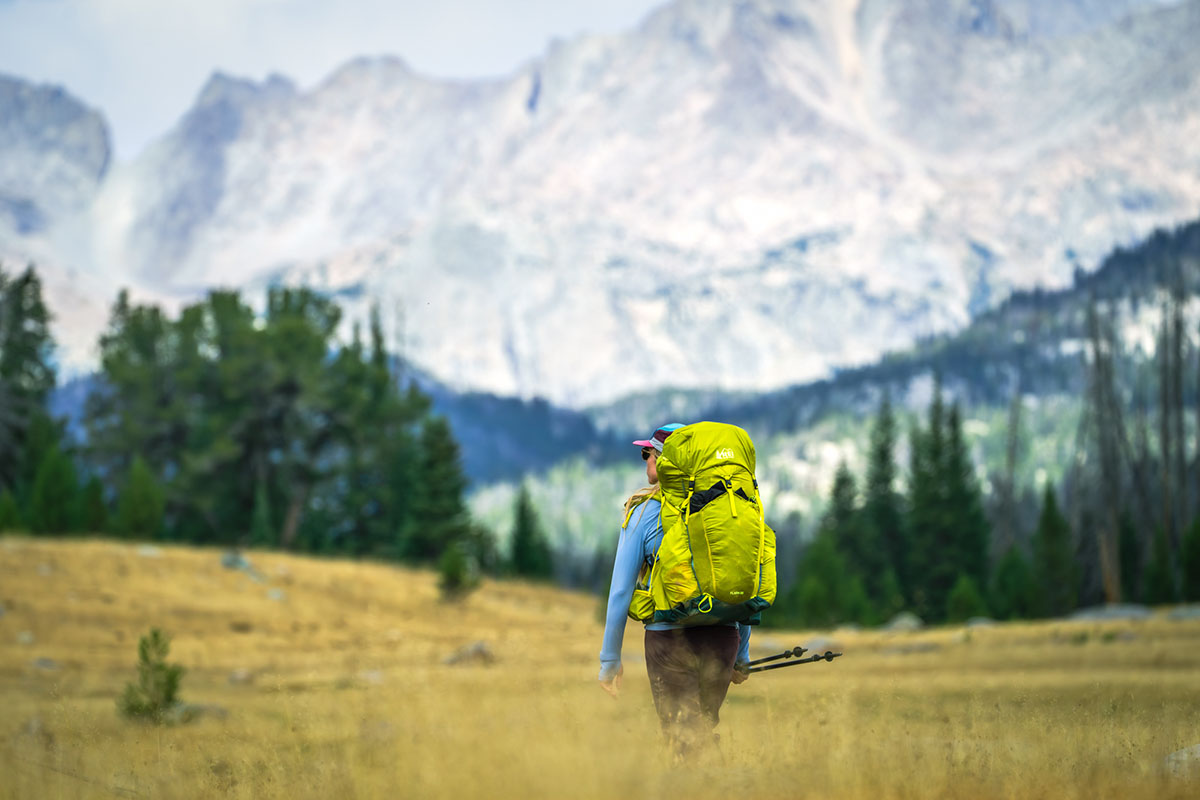
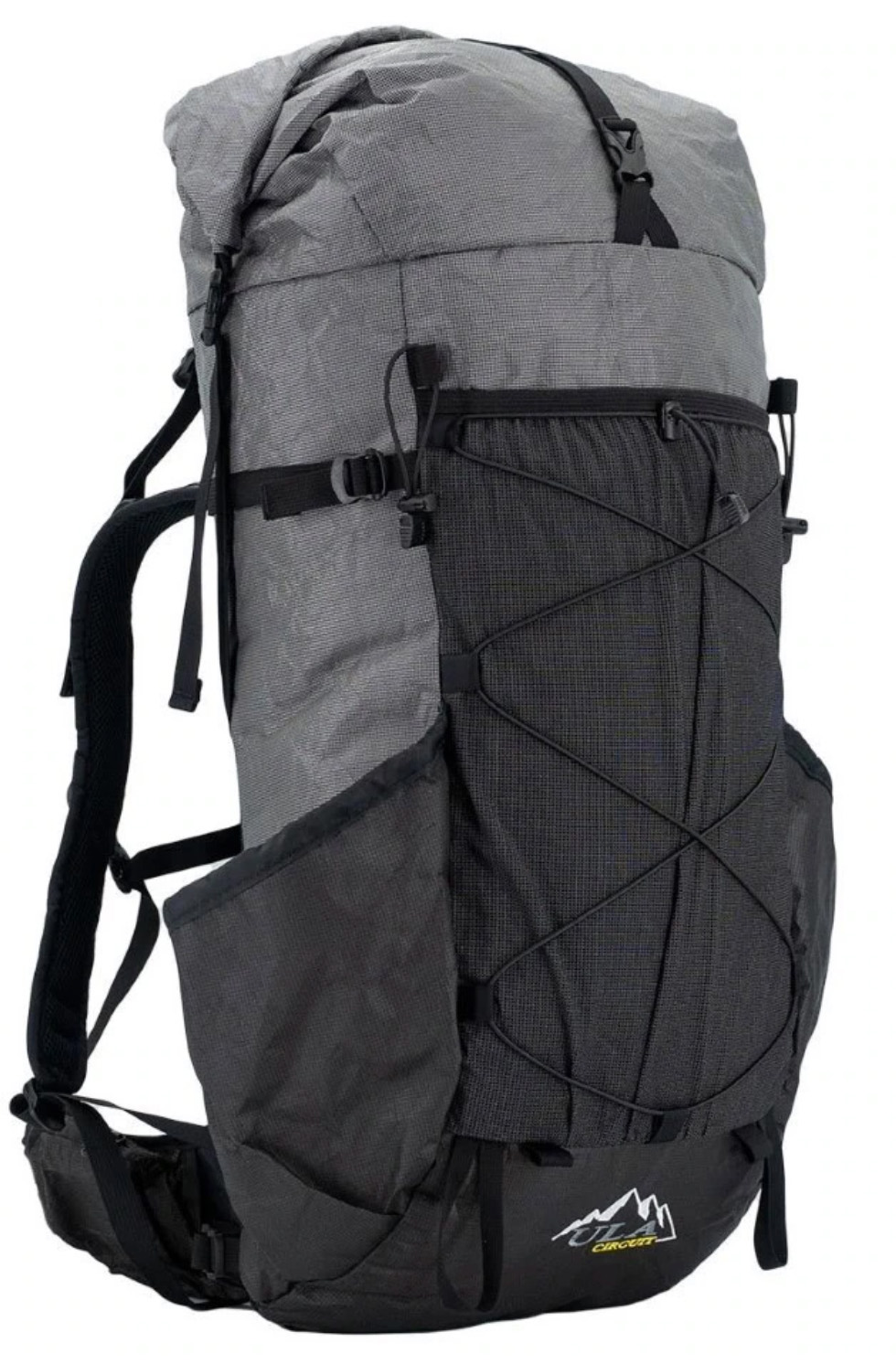 Weight: 2 lb. 4.8 oz.
Weight: 2 lb. 4.8 oz.
Fabric: Ultra (200D & 400D)
Capacity: 68L
What we like: Competitively lightweight and durable construction designed for and by thru-hikers.
What we don’t: Not the lightest pack here; you can save considerably with the Robic nylon version.
Headquartered in northern Utah, ULA Equipment is well regarded in the thru-hiking and ultralight backpack communities, and the Circuit is their flagship design. Building on that pack’s impressive comfort and customizability, ULA released the Ultra Circuit last year, which offers upgrades in durability and weather resistance compared to the Robic nylon version. The Ultra model costs $80 more, but we think the innovative fabric—considered the latest and greatest in ultralight tech—is worth the upgrade for those who get out a lot and are hard on their gear. We also appreciate that the pack comes in an extensive range of sizes, with the option to customize torso length, hipbelt size, and shoulder strap style depending on your fit preferences. And at just 2 pounds 4.8 ounces, the Ultra Circuit is competitively light given its 68-liter capacity and practical organization layout, including generous front and side pockets, zippered hipbelt storage, and ample exterior attachment points (including ice axe/trekking pole loops).
We’ve brought the Circuit on multi-day trips in Patagonia and up 14ers in Colorado and have been very pleased by how easy it is to load up, adjust, and even streamline as a daypack on short outings from camp. In fact, we’ve been so impressed by the Circuit that we moved it up in our rankings during the last update, replacing Hyperlite’s Southwest 55 below as our favorite women’s ultralight pack. The biggest reason was customizability, but the ULA is also larger by 13 liters, and we prefer its stretchy front pocket over the Southwest’s solid Dyneema design (although the flip side is reduced durability). The Southwest does win out in weight by around 7 ounces, but the Ultra Circuit offers similar abrasion resistance and waterproofing in a more sustainably built package (the Ultra fabric is made from 100%-recycled polyester).
See the ULA Equipment Ultra Circuit 68
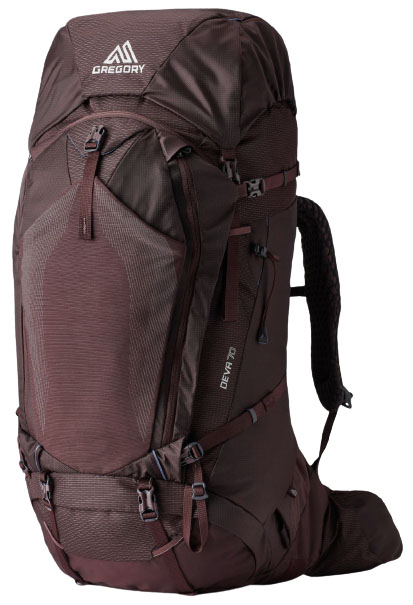 Weight: 5 lb. 1.0 oz.
Weight: 5 lb. 1.0 oz.
Fabric: Nylon (210D & 420D)
Capacities: 60, 70, 80L
What we like: Top-of-the-line comfort, organization, and load-bearing suspension.
What we don’t: Heavy and expensive; overbuilt for most backpackers.
Some backpackers shave weight by cutting off the end of their toothbrush, while others like to travel with all the comforts of home. If you identify more with the latter, it’s worth considering a feature-rich pack like the Gregory Deva 70. The Deva is built to carry up to 55 pounds thanks to its strong suspension and plush harness, which features a free-floating backpanel, a refined lumbar and hipbelt system, and shoulder straps that pivot with the body’s movements. Plus, there’s no shortage of organization for all your gear, including nine exterior pockets, U-shaped access to the main compartment, cavernous hipbelt pockets, and multiple exterior attachment points. For la crème de la crème of backpacking packs, look no further than the Deva 70.
But unless you work as a guide or trip leader, regularly schlep expedition-style loads, or need excessive amounts of organization, it’s worth thinking twice about the Deva. In fact, we experienced the copious storage options as a downside—with a dozen separate compartments, you’re bound to misplace gear inside your own pack. And held up against more streamlined designs, many of the Deva’s features have started to strike us as cumbersome rather than luxurious, including the bulky Velcro fit adjustments and dedicated access to the bottom sleeping bag compartment. Finally, the pack is a pound heavier and $70 more than our top-ranked Aura AG LT, which will get the job done for the majority of backpackers. But if you plan to carry 50-plus pounds, the Deva will shoulder the load better than most.
Read more: Gregory Deva 70 review
See the Gregory Deva 70
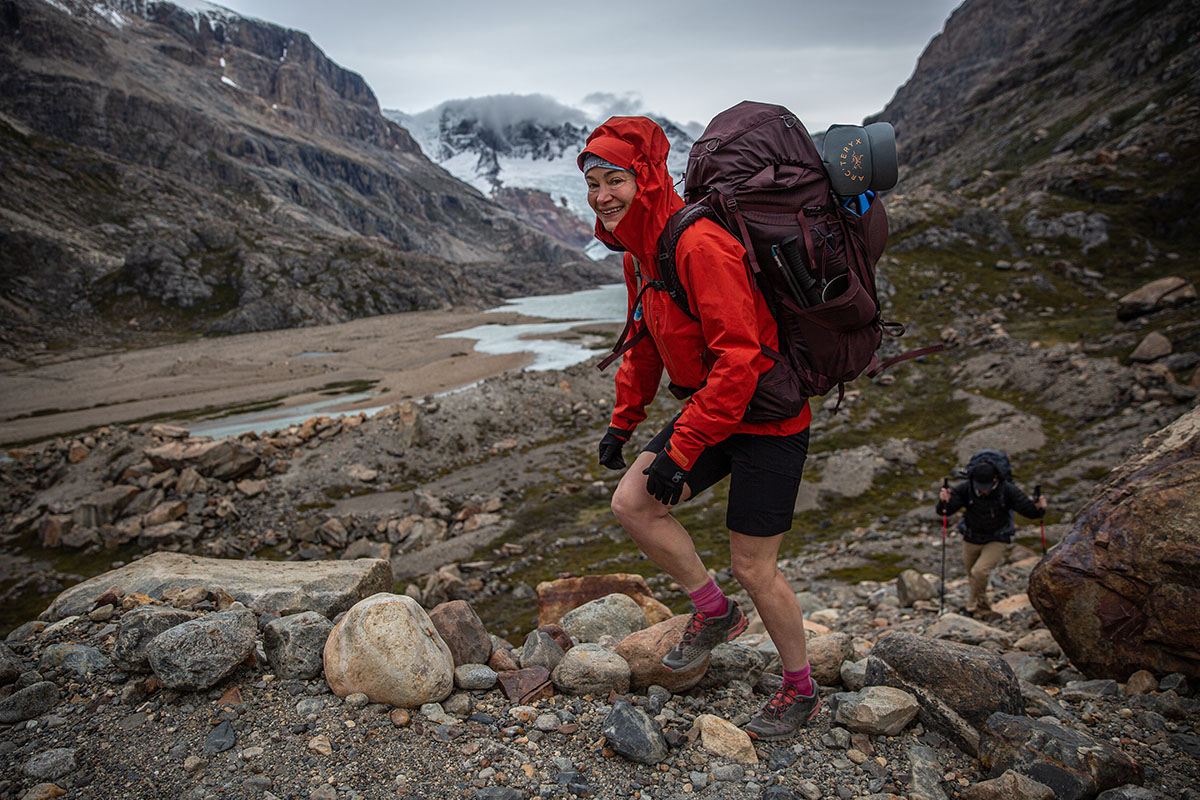
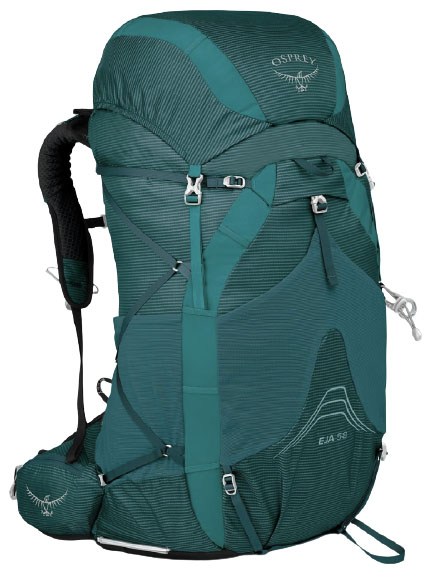 Weight: 2 lb. 13.2 oz.
Weight: 2 lb. 13.2 oz.
Fabric: Nylon (100D & 400D)
Capacities: 38, 48, 58L
What we like: A comfortable and feature-rich pack for the ultralight-curious.
What we don’t: You can save a lot of weight and bulk with a pack like the ULA Circuit above.
If you’re ultralight-curious but not yet ready to take the full deep dive, the Osprey Eja is an excellent backpack to consider. Checking in over a pound lighter than our top-ranked Aura AG LT, the Eja drops weight with stripped-down features, simple organization, and thinner fabrics. But comfort remains a priority: The body-hugging hipbelt, lightweight aluminum frame, and full mesh backpanel offer significantly more support than the streamlined suspension typically found on UL packs such as the ULA Ultra Circuit above and Hyperlite Southwest below, and the design features an adjustable torso length. All told, the Eja is a soft landing for those transitioning from the world of traditional backpacking into lighter-weight gear.
Compared to the Aura AG LT above, the Eja’s biggest compromises come in terms of organization and durability. You only get a single access point to the main compartment, and the fabric on the body is thin 100-denier (D) nylon. Osprey also advertises a 35-pound load limit for the Eja (compared to the Aura’s 40-lb. limit), although we’ve found the Airspeed suspension and Exoform harness to be very comfortable. And if you’re looking for a true competitor to a pack like the ULA Ultra Circuit, this isn’t it: The Eja is over 8 ounces heavier, falls short in durability and waterproofing, and features a plusher carry system that's far more reminiscent of a standard backpacking pack than a traditional thru-hiker pick (this may be a pro or con depending on your priorities and preferences). Despite its compromises, we’ve found the Eja to be a really nice middle ground for those looking to balance comfort and weight savings. For an even more streamlined design from Osprey, check out the 2-pound Eja Pro 55 ($320).
Read more: Osprey Eja 58 review
See the Osprey Eja 58
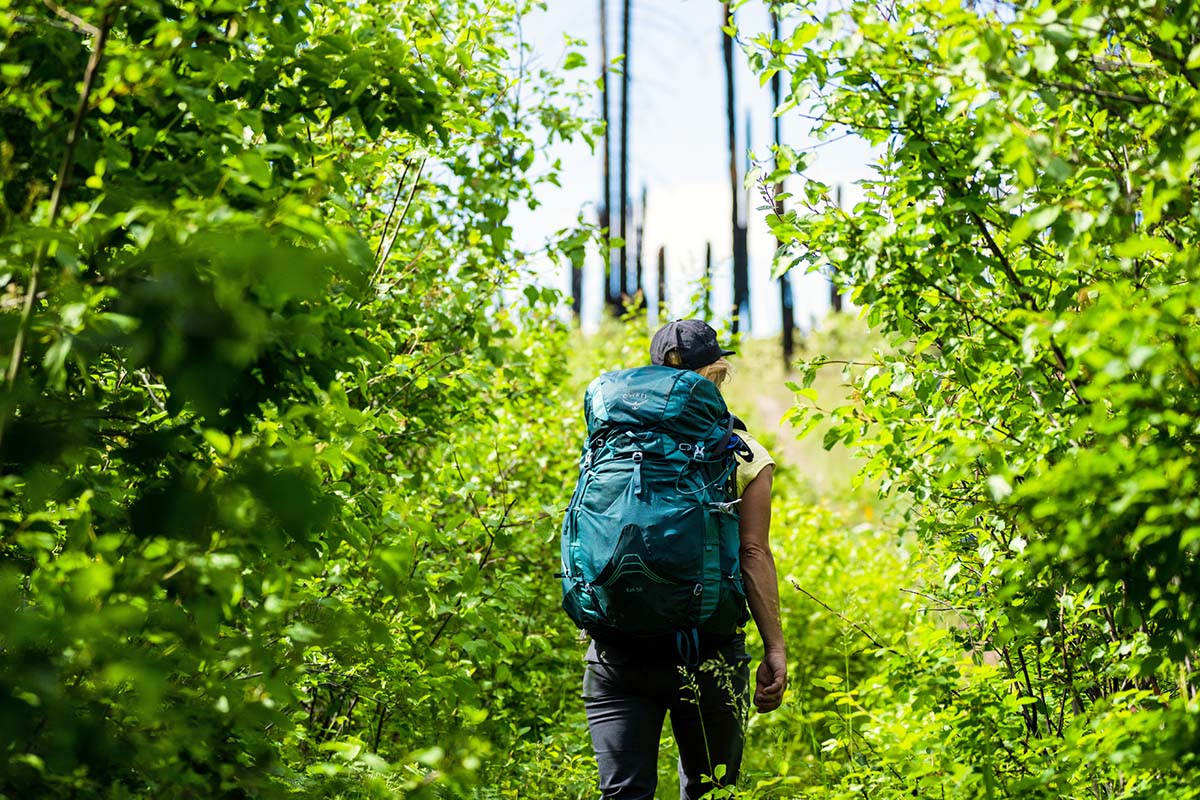
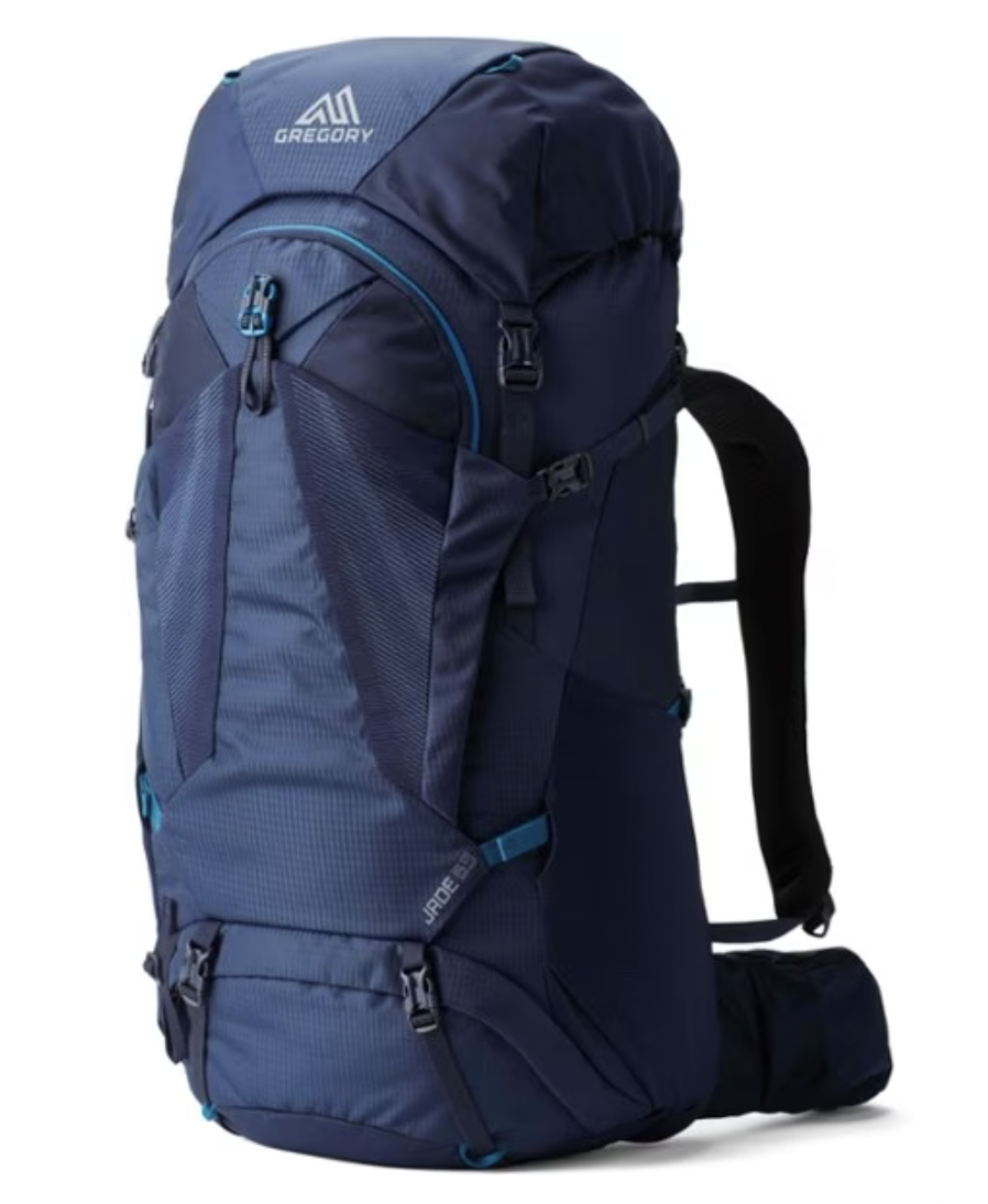
Weight: 4 lb. 2.6 oz.
Fabric: Polyester (400D & 420D)
Capacity: 63L
What we like: A well-rounded pack that's thoughtfully built to accommodate a more diverse range of body shapes and sizes.
What we don’t: Only comes in one color and capacity.
Part of Gregory's growing line of plus-size packs, the Jade 63 is a versatile all-rounder that strikes a nice balance of comfort, weight, and features at a competitive price. While smaller and less plush and feature-rich than the brand’s Deva above, the Jade is easy to adjust, boasts Gregory’s FreeFloat suspension system that evenly distributes weight while minimizing sway, and has a mesh-heavy backpanel that does a decent job promoting airflow. Additionally, the zippers and foam feel well built and durable, and the pack doesn’t skimp on useful extras like U-shaped access to the main compartment, large mesh front and side pockets, and bear canister-friendly dimensions. And importantly, Gregory didn’t just extend the hipbelt with the plus-sized version—they also tweaked the pocket placement and strap sizing to accommodate more body shapes.
We’re happy to see big-name brands like Gregory and Osprey expanding their plus-size offerings, but options still remain fairly limited. Within Gregory’s own lineup, the Amber 68 Plus Size is $30 cheaper and over 5 ounces lighter but only comes in one size and uses less durable (210D and 420D) fabrics. It also has fewer pockets and lacks the Jade’s U-zip access to the main compartment. As for Osprey alternatives, their Extended Fit collection includes several packs including the budget-friendly Renn 65 and heavy-hauling Ariel 65, but neither of those packs are quite as well rounded as the Jade. Editor’s note: We haven’t reviewed the plus-size Jade yet, but we did bring the standard model on a demanding trip to Patagonia, and you can read about its performance here.
See the Gregory Jade 63 Plus Size

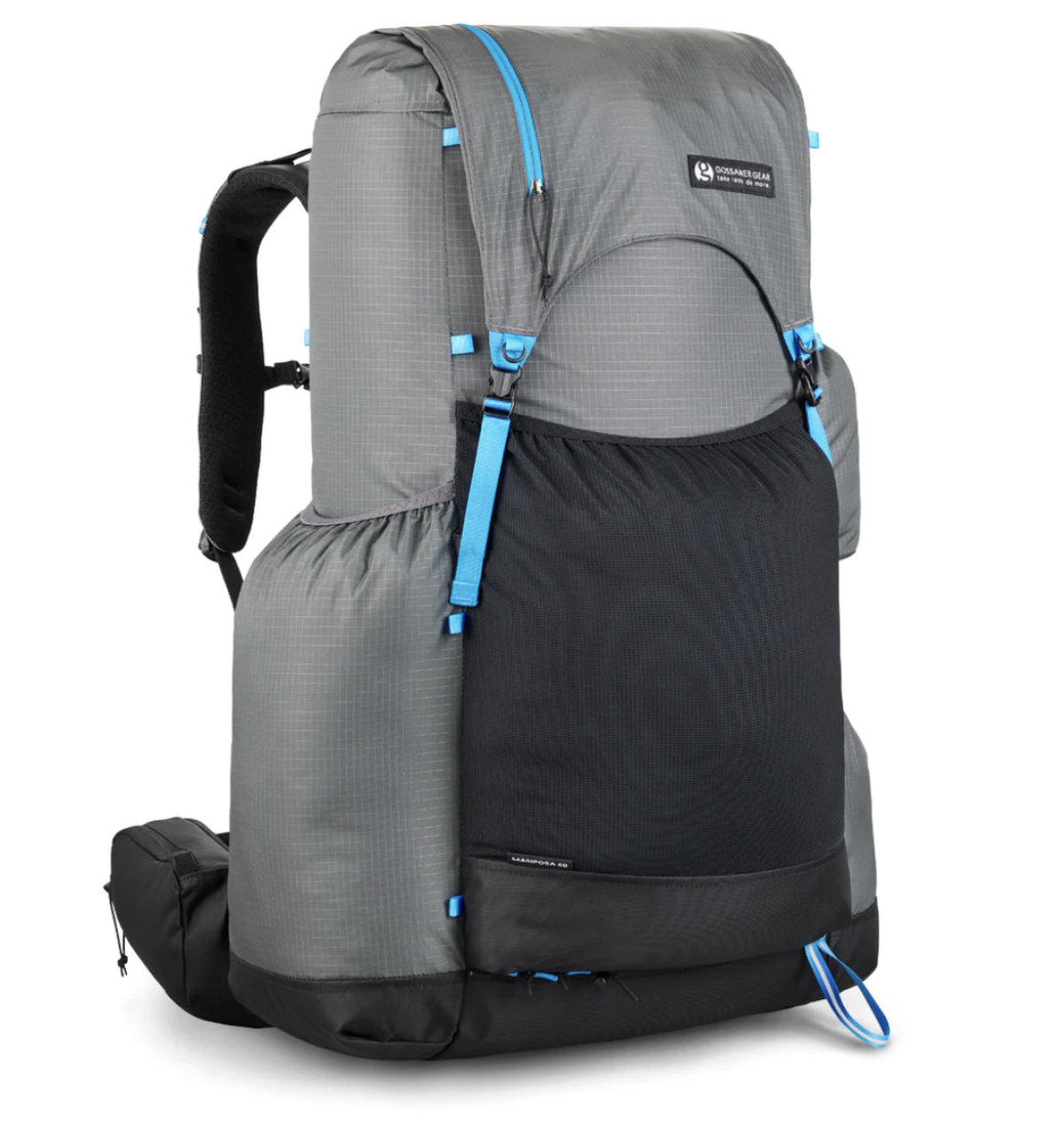
Weight: 2 lb. 2.2 oz.
Fabric: Robic nylon (100D & 210D)
Capacity: 60L
What we like: A lightweight, streamlined design with great organization and a promising recent update.
What we don’t: Thinner fabrics and less customizable than the ULA Circuit above.
The ultralight cottage brand scene is strong in 2025, with Texas-based Gossamer Gear right up there with Hyperlite, ULA, and Zpacks. The flagship Mariposa is the brand’s largest-capacity hauler and has become one of our go-to packs for everything from quick overnights to week-long missions. Recently updated with an upgraded frame, slightly more durable exterior, and retooled load lifters, the pack offers 60 liters of capacity split between the main compartment and seven exterior pockets while checking in at just over 2 pounds (for the medium size with a medium hipbelt). The feature set is designed for and by experienced thru-hikers: The extra-tall side pocket can accommodate a backpacking tent or trekking pole-supported shelter, the stretchy front pocket is great for stashing spare layers and other essentials, and the large hipbelt pockets make it easy to divvy up electronics and snacks. All told, the Mariposa is a streamlined but highly practical design that's even more competitive after the recent changes—and we love the new colorways debuted last season.
Along with the ULA Ultra Circuit above, the Mariposa is one of the most popular cottage-brand UL packs on the trail. The Gossamer Gear is a few ounces lighter than the ULA but uses noticeably thinner fabrics (100D and 210D compared to 200D and 400D for the Circuit), which is noteworthy if you’re hard on your gear. The ULA also offers better fit customization—including the choice between two styles of shoulder straps—although we appreciate that Gossamer Gear upped the number of hipbelt offerings with this latest update. Finally, we found the new location of the grab handle (a few inches below the top of the frame) makes it somewhat awkward to pick up, and we wouldn't recommend exceeding the pack's 35-pound load limit—it felt unbalanced and painful when weighted down with a water cache on an otherwise ultralight outing last fall. But for weight-conscious backpackers who prioritize organization and on-the-go access—two areas where many competitors suffer—the Mariposa remains hard to beat.
Read more: Gossamer Gear Mariposa review (prior version)
See the Gossamer Gear Mariposa 60
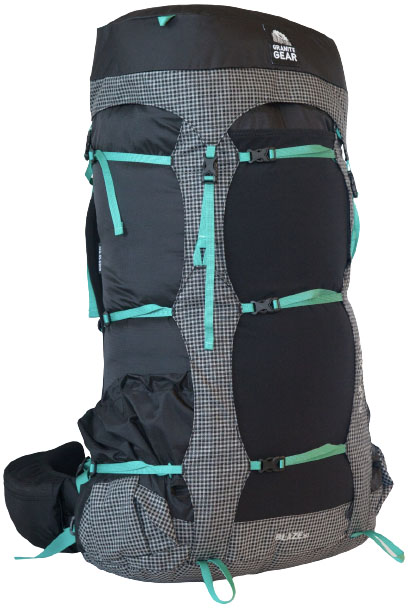 Weight: 3 lb. 0 oz.
Weight: 3 lb. 0 oz.
Fabric: Robic nylon (100D & 210D)
Capacity: 60L
What we like: A capable hauler at a very reasonable weight.
What we don’t: We'd love more external pockets and a more precise fit.
Granite Gear is a classic example of a homegrown brand that makes gear by the people, for the people. Their Blaze 60 is a true workhorse, combining heavy-hauling credentials and smart organization for just 3 pounds. We tested the pack during a challenging multi-day trek through the Grand Canyon and were impressed with its load-carrying capabilities and all-around performance. The Blaze is rated for 50 pounds, and the sturdy framesheet and substantial hipbelt and shoulder strap padding carried a full load surprisingly comfortably. Plus, the side-zip access made it easy to find gear without unpacking the whole bag, and the oversized front and side dump pockets proved extremely functional (you can fit two standard water bottles in one side pocket). Perhaps most impressively, the Blaze pulls it off while checking in at least a full pound lighter than most of the competition.
What’s not to like with the Blaze 60? The padded backpanel favors comfort and support over breathability, and we found it to be stiffer and sweatier than a suspended design like the Aura or Jade above. Moreover, the fit adjustments aren’t particularly fine-tuned, with heavy Velcro patches and difficult-to-reach clips. But these are small nitpicks, and the Blaze joins designs like the Eja above as a lightweight offering that gives up little in the way of comfort and features. On top of that, many will appreciate its customizable build: You can remove the lid, secure it to the shoulder straps for on-the-go storage, or even convert it to a fanny pack. All told, the Granite Gear is a nice alternative to bigger-name brands like Osprey and Gregory, and traditionalists will appreciate the standard foam backpanel design. Note: The Blaze is on its way out this season and substantially discounted while supplies last.
Read more: Granite Gear Blaze 60 review
See the Granite Gear Blaze 60
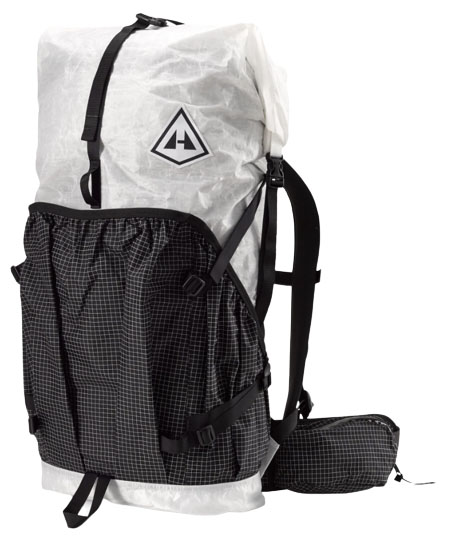 Weight: 1 lb. 14.8 oz.
Weight: 1 lb. 14.8 oz.
Fabric: Dyneema Woven Composite 3.9
Capacities: 40, 55, 70L
What we like: A true trail icon; Dyneema construction offers great durability and waterproofing.
What we don’t: No lid or secondary access to the main compartment; simplified backpanel compromises comfort and ventilation.
There’s a lot of value in traveling light on the trail: In addition to expending less energy with each step, it's likely you'll have a more enjoyable overall experience (provided you can dial in a good fit). Once you’ve pared down the rest of your kit, it’s time to start thinking about an ultralight backpack. Hyperlite’s offerings sit at the top of the food chain thanks to their Dyneema construction (technically, Dyneema woven to a polyester face fabric), which translates to incredible strength and water resistance without the weight penalty. Their options differ in terms of capacity and external pocket fabric, and the Southwest 55 is our favorite, featuring 55 liters of storage split among a cavernous main compartment, three burly exterior pockets, and two hipbelt pockets. For just under 2 pounds, it’s an incredibly hardwearing and high-quality pack that should last you season after season of hard use.
If you’re transitioning from a traditional backpacking pack, expect a learning curve with the Southwest. Like most UL models, including the ULA Ultra Circuit above and Zpacks Arc Haul Ultra below, the Hyperlite does not feature a lid, and with no secondary access to the main compartment, you’ll have to empty your whole pack to access contents at the bottom. What’s more, although Hyperlite gives a 40-pound load limit for the Southwest 55, most ULers try to keep their base weight (gear minus consumables) under 13-ish pounds. In other words, you’ll want to make sure the rest of your kit is proportionally streamlined. All told, the Southwest is not without compromise, but for dedicated UL enthusiasts looking for the premium performance of Dyneema, it’s hard to beat. It’s also worth mentioning Hyperlite’s Unbound 55 ($399), which is purpose-built for those sticking to the trail (including svelter features and a convenient stretch-mesh dump pocket) but lacks the Southwest’s tank-like feel.
Read more: Hyperlite Southwest 40 review
See the Hyperlite Southwest 55
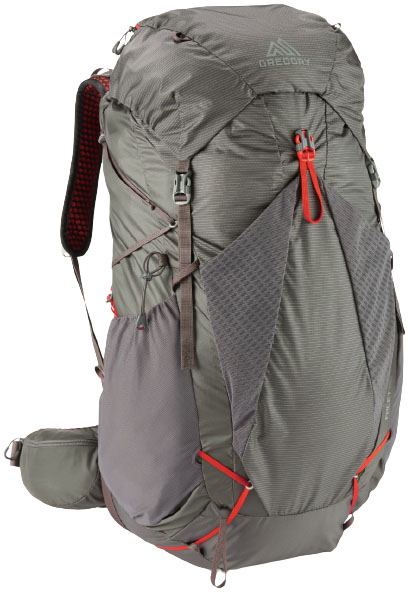 Weight: 2 lb. 8.8 oz.
Weight: 2 lb. 8.8 oz.
Fabric: Nylon (100D & 210D)
Capacities: 45, 55L
What we like: If it fits, this is a strong alternative to the Eja above.
What we don’t: No torso length adjustment and only sold in a single bland colorway.
Falling into the same category as the Osprey Eja above, the Gregory Facet toes the line between the all-around and ultralight categories with a best-of-both-worlds design. If you’re accustomed to a traditional backpack but want to dip into the UL world, this is one of the best places to start. At just 2 pounds 8.8 ounces (for a size small), the Facet is lightweight—albeit not quite ultralight—but still retains many of the features we expect in a feature-rich pack, including a suspended mesh backpanel, removable lid, and molded zipper pulls for easy access to the hipbelt pockets and lid. For weekend warriors or long-distance thru-hikers who want that extra level of comfort and convenience, the Gregory is a really solid option.
In our testing, we actually preferred the Facet to the Eja—the Gregory is more streamlined (the Osprey felt overly bulky at the lumbar), and its exterior is sleeker with fewer external straps. It doesn’t hurt that it’s $10 less and a few ounces lighter, too. But the Facet has one big flaw: It lacks a torso length adjustment, which isn't a huge ding when compared to ultralight packs but is a shortcoming compared to the Eja. Another (entirely subjective) complaint is the Facet's dull gray colorway, which is currently the only option that Gregory offers. Gripes aside, if the Facet fits (it’s available in three sizes), it’s an excellent option for backpackers looking to save weight without committing to a true UL design.
Read more: Gregory Facet 55 review
See the Gregory Facet 55
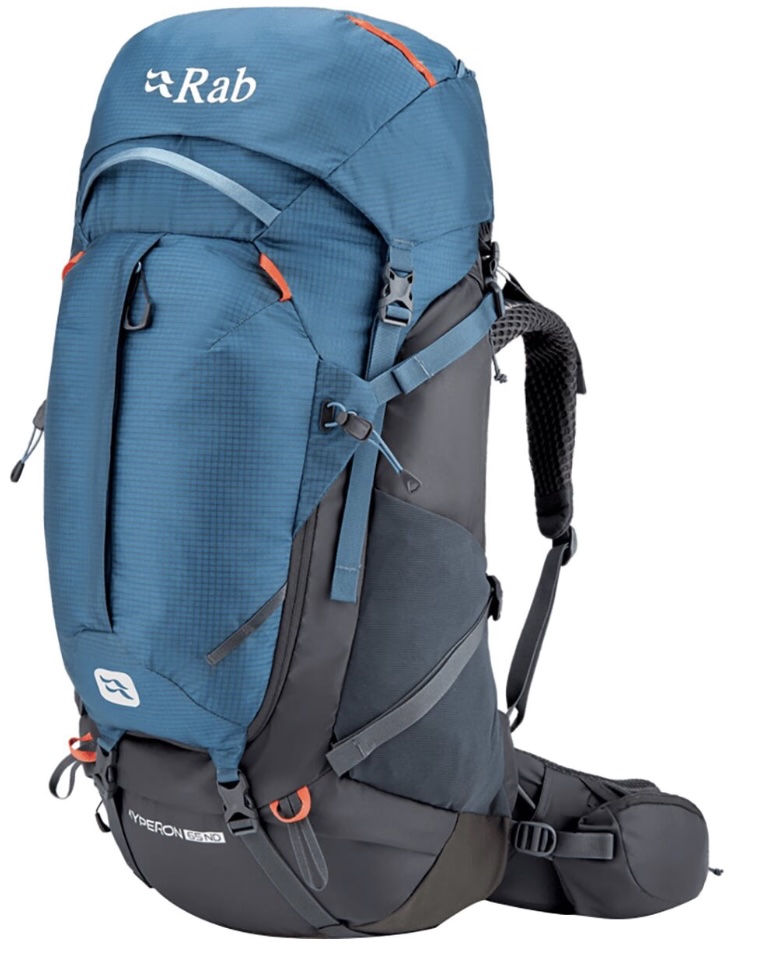 Weight: 5 lb. 5.0 oz.
Weight: 5 lb. 5.0 oz.
Fabric: Robic nylon (210D)
Capacities: 65, 80L
What we like: Excellent weight bearing for heavy loads; intuitive organization.
What we don’t: Very heavy; requires careful packing and adjustments to maximize comfort; water bottle pockets are hard to reach without taking the pack off.
We were initially intimidated by the Rab Hyperon's weight—over 5 pounds empty—and thought it might be overbuilt with metal support rods visible through the hipbelt. But after some adjustments and reorganizing, our tester was able to balance the pack and fit it properly on her torso, and it distributed the heavy load comfortably through the cushioned, pivoting hipbelt and supportive backpanel (this panel is also easily adjustable using Rab's V-Trax system). We experienced no hotspots or sore hip bones once it was packed correctly, and the 210D nylon body is reinforced with a ripstop material called Spectra for additional abrasion resistance. Plus, we love the sustainability focus with a PFAS-free build and high percentage of recycled materials.
At over 5 pounds, the Hyperon is quite hefty for a modern backpacking pack, though the weight is pretty well spent given the pack's generous padding and load-bearing capabilities. We did find the Hyperon has to be packed carefully to maximize the benefits of the weight distribution—the pack was a little uncomfortable without the right weight balance and proper organization. We also couldn't reach the side water bottle pockets while moving, though the pack is compatible with a hydration bladder if you go that route. Overall, while the Hyperon is overkill for shorter trips, if you're looking for a pack optimized for heavy loads with an intuitive organization layout (including both top and front entry), this is a strong alternative to offerings like the Gregory Deva above and Osprey Ariel below.
See the Rab Hyperon ND65L
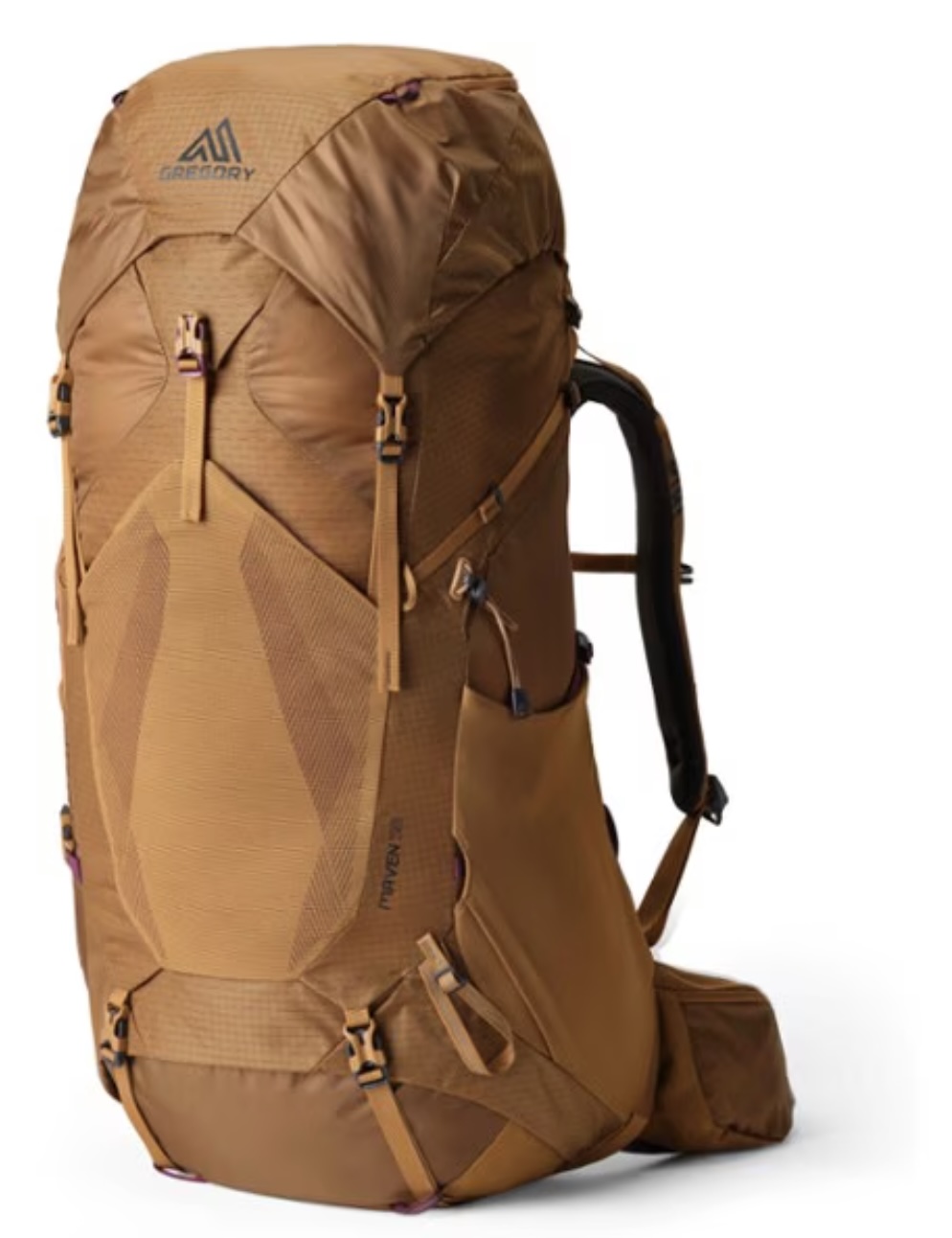 Weight: 3 lb. 8.0 oz.
Weight: 3 lb. 8.0 oz.
Fabric: Nylon (100D, 210D, & 300D)
Capacities: 48, 58, 68L
What we like: Updated design has better gear access and fit adjustability.
What we don’t: Feels a bit overbuilt; lid flops unless pack is filled to capacity.
The Maven has been around for awhile in 45, 55, and 65-liter capacities, but this year's update pared down the design and retooled the size offerings, including a sleeker build and new 48, 58, and 68-liter options. The latest iteration weighs about the same as the previous version (the 58 is 1.6 oz. heavier than the outgoing 55) and uses a 300D nylon base instead of 420D. The Maven still has all the bells and whistles of traditional packs and is a notable step up in features from designs like the Gregory Facet above, including an adjustable backpanel and multiple access points. We added the Maven to our list this year thanks to its mid-range comfort and weight limit for backpackers who don't need the heaviest and most padded pack but appreciate lots of organization and solid durability.
While the Maven slots nicely between the lighter Gregory Facet above and heavier Osprey Ariel below, it lands into a bit of an awkward in-between spot in the market. We found the backpanel to be a bit cumbersome, and the pack still feels overbuilt in today's world of increasingly streamlined options. And while we appreciate the adjustable torso system, we found the mechanism to be somewhat clunky, and the bottom sleeping bag compartment will feel unnecessary for most. In the end, we like this pack for casual backpackers but anticipate most will either want something lighter (like the Facet or Osprey Eja above) or with heftier load-bearing (like Gregory's own Deva or Rab's Hyperon above).
See the Gregory Maven 58
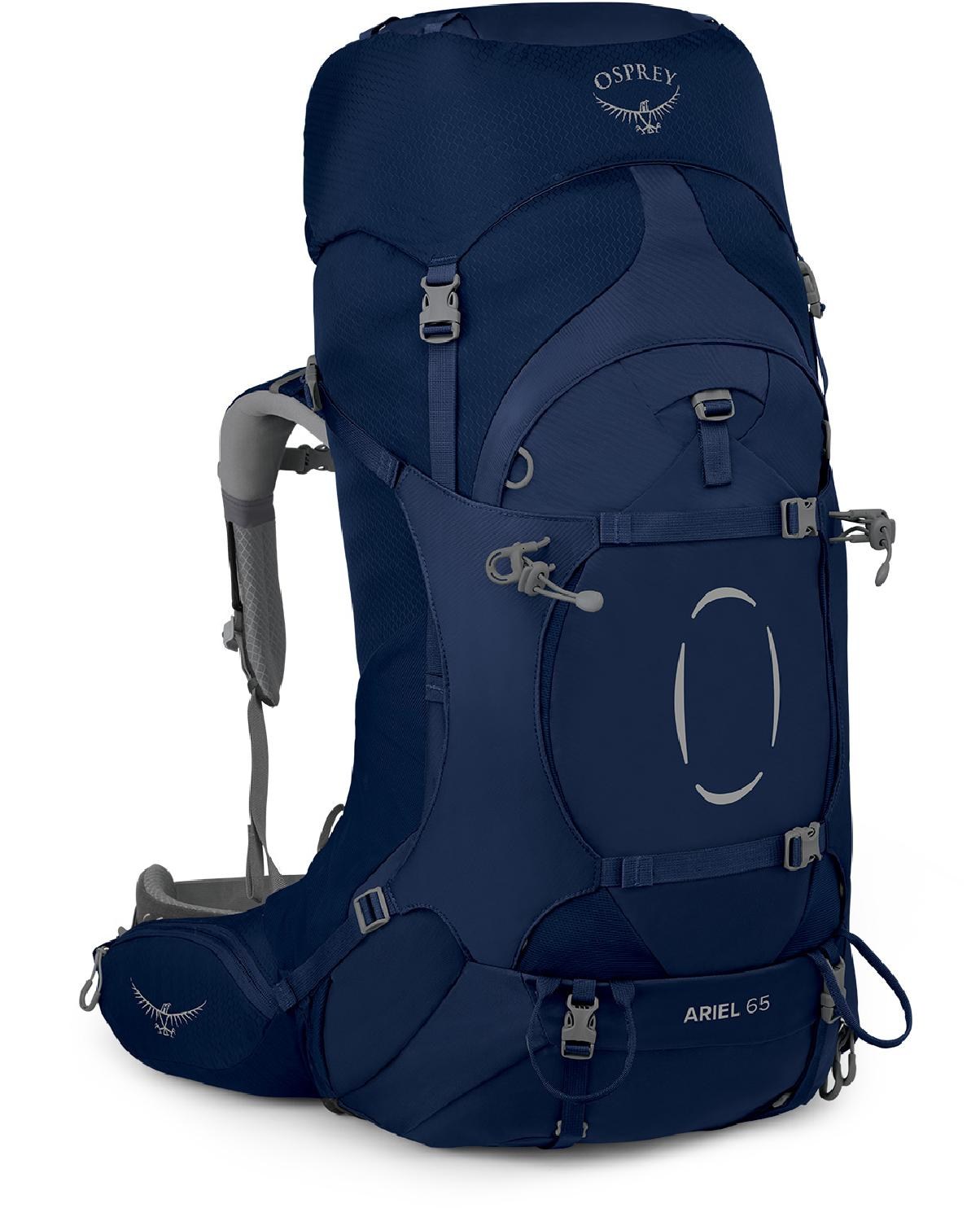 Weight: 4 lb. 14.3 oz.
Weight: 4 lb. 14.3 oz.
Fabric: Nylon (210D & 420D)
Capacities: 55, 65L
What we like: Great adjustability and very comfortable for hauling heavy loads.
What we don’t: Most backpackers are better off with the Aura.
The Aura AG (and similar Aura AG LT above) is Osprey’s leading backpacking pack, but for heavy hauling and light mountaineering, the Ariel offers even more in the way of comfort and features. Last year's update dropped the AntiGravity (AG) suspension system for an AirScape backpanel, which is less elaborate but still has breathable foam and mesh to help keep you cool (and can handle loads of up to 60 lb.). And you get all kinds of adjustability, including Osprey's Fit-on-the-Fly system that easily tailors the fit of the shoulder straps and hipbelt, along with ample compression straps and attachment points for ice axes, tent poles, and more. Last but not least, the large J-shaped zipper at the front provides easy on-the-go access to the main compartment.
The primary downside of the Ariel 65 is its weight, which squeezes in just under 5 pounds. On top of that, organization is middling: You only get five external pockets (seven if you’re counting water bottle holders), and the hipbelt stashes are oddly placed and difficult to reach. For the majority of backpackers, we think the Aura AG LT is the more practical all-around design for 14 ounces less; on the other hand, the Gregory Deva above gets you more capacity for a similar weight (although it costs $40 more). But in terms of premium haulers, the Ariel has a lot to offer, and it's available in an Extended Fit version to accommodate a broader range of body sizes. Osprey also makes the beefed-up and feature-rich Ariel Plus, which could be a great alternative depending on your needs.
Read more: Osprey Ariel 65 review
See the Osprey Ariel 65
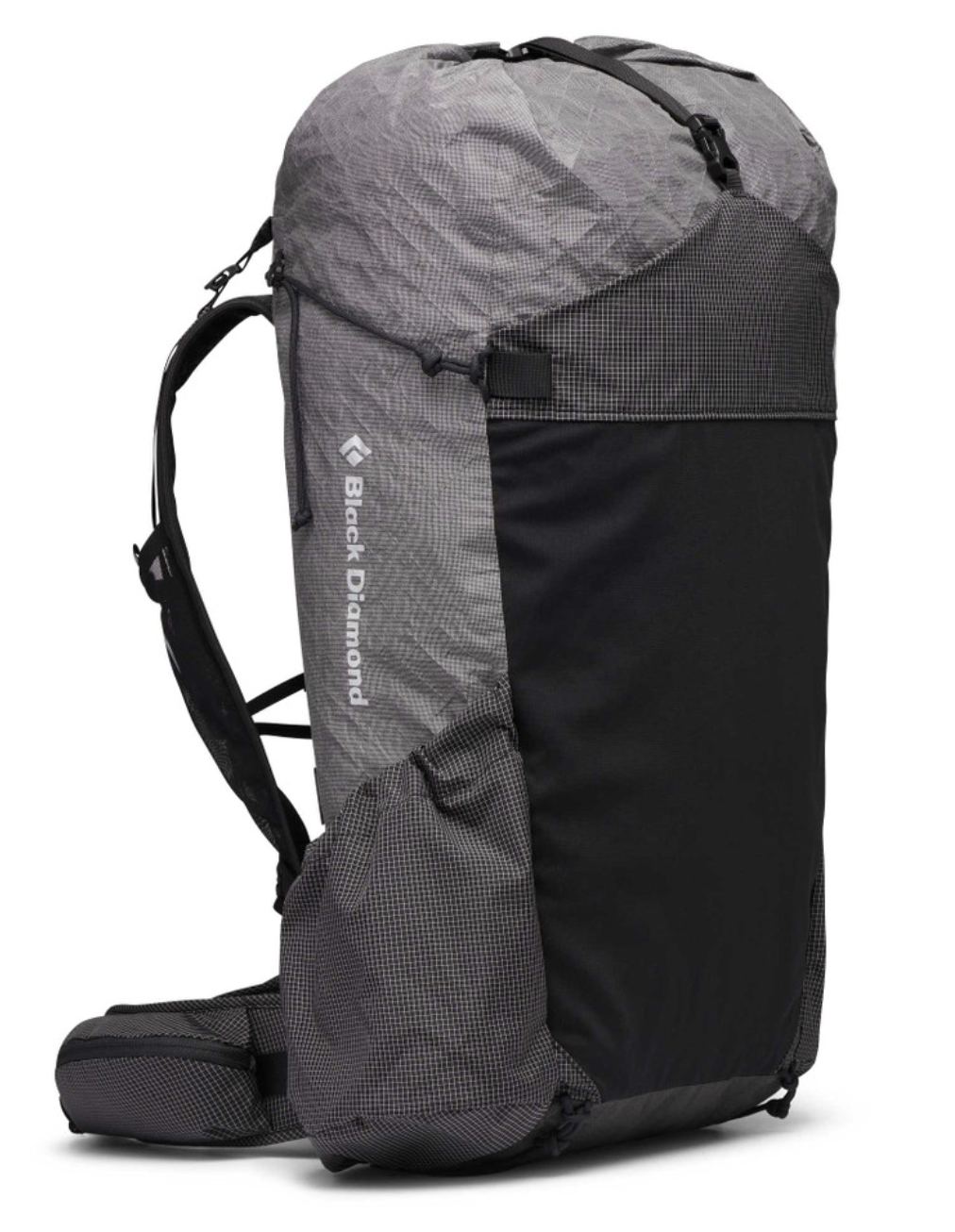 Weight: 1 lb. 15.4 oz.
Weight: 1 lb. 15.4 oz.
Fabric: Ultra (200D & 400D)
Capacities: 30, 45L
What we like: A streamlined but entirely capable design for the fast-and-light crowd; running vest-inspired pockets make on-the-go access very easy.
What we don’t: Tough to dial in a close fit; only offered in capacities up to 45L.
Black Diamond excels in the fast-and-light category, and their first real foray into the ultralight backpacking/thru-hiking world nicely reflects that expertise. Right away, it’s clear that this pack is purpose-built for minimalists and ounce-counters aimed at moving quickly and unencumbered over long distances. Access is one clear giveaway, including running vest-inspired shoulder straps that feature both zippered and open pockets for stashing snacks, soft flasks (sold separately), and other small items you want close at hand. The Beta is also made with Ultra (as seen in the ULA Circuit above), an increasingly popular alternative to Dyneema in the UL space with inherent waterproofing abilities and an impressive strength-to-weight ratio. This helps bring weight down to less than 2 pounds without feeling overly compromised (you still get an aluminum frame and well-padded hipbelt). You can go even lighter by ditching the frame pad, hipbelt, and compression straps—for a total savings of 13 ounces—but we’ve been so impressed with the pack’s weight distribution that we’ve opted to keep them on throughout testing.
The Beta Light is an enticing addition to the UL market but not perfect. As far as fit goes, we had some trouble getting the load lifters cinched tightly enough to bring the weight close to our back, and the stretchy sternum straps offer less security than the solid-webbing strap you get with more traditional designs like the ULA Ultra Circuit or Hyperlite Southwest above. Not to mention, Black Diamond only offers the pack in capacities up to 45 liters, making it the smallest option here (and realistically too streamlined for most). But for long-distance backpackers looking for the ultimate in on-trail convenience—and have the rest of their kit dialed in—the Beta Light is a promising pack that we’re excited to continue testing.
See the Black Diamond Beta Light 45
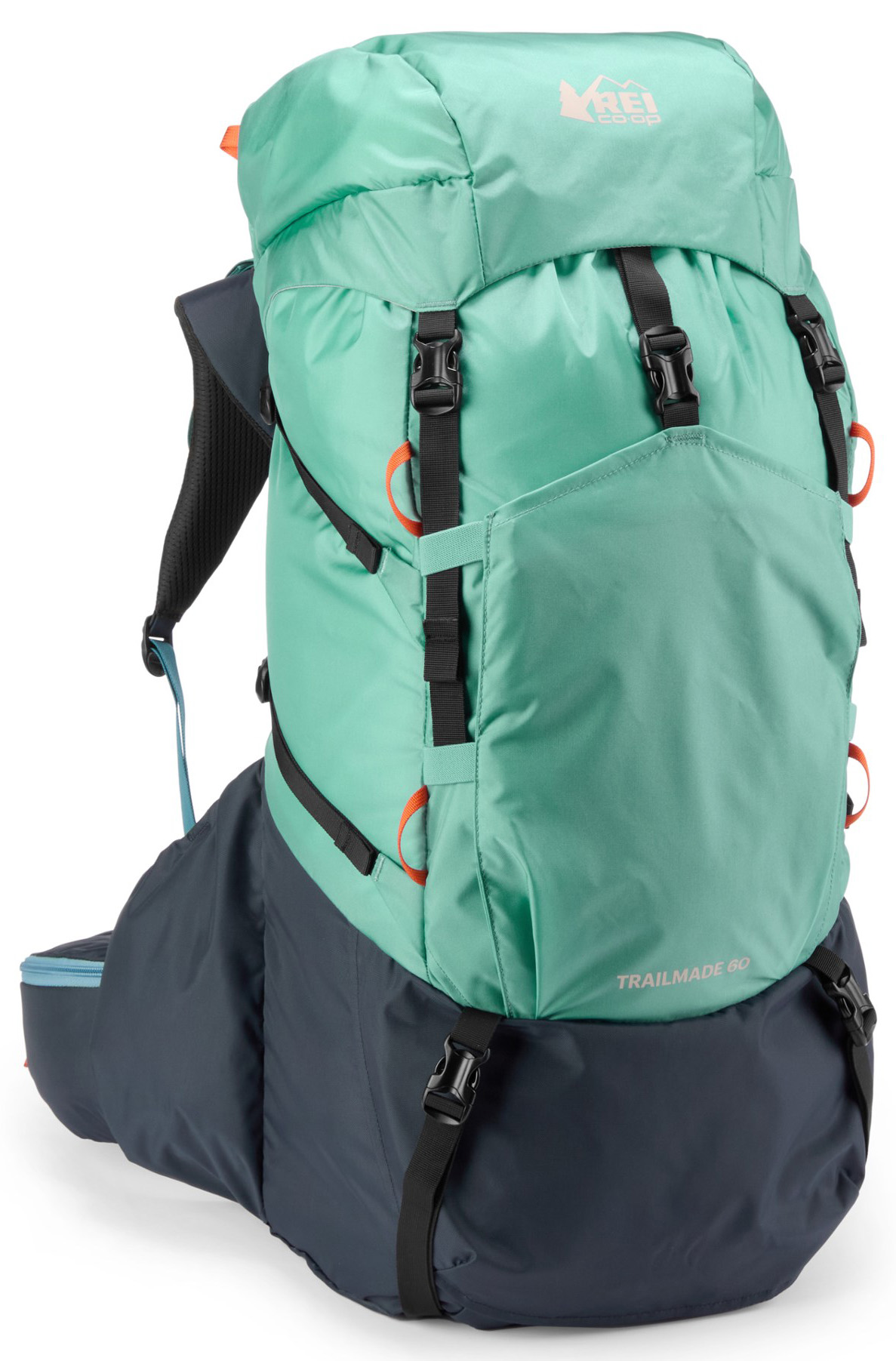 Weight: 3 lb. 4.0 oz.
Weight: 3 lb. 4.0 oz.
Fabric: Nylon
Capacity: 60L
What we like: Decent performance for the price and the sizing is very adjustable.
What we don’t: Cheap materials and budget-feeling fit and finish.
We’re big fans of everyone getting outside and are unfortunately aware that the cost of gear can be a significant hurdle. REI Co-op’s Trailmade series is built to address this issue, with a modest collection of budget-priced clothing and backpacking equipment. The Trailmade 60 isn't the nicest pack we’ve tested—it feels more like an old-school gear hauler than a modern design—but it gets the job done without breaking the bank. The suspension felt decently comfortable on a tough overnight trip, and organization was intuitive with a large main compartment, easy-to-access sleeping bag storage, and six external pockets. For just $179, the Trailmade 60 is an excellent pick for those on a budget or backpackers who only get out a few times a year.
It’s worth noting that we previously had the Trailmade as our top budget pick but replaced it with REI’s $20-pricier Flash 55 after thoroughly testing both packs. Despite costing less, the Trailmade’s materials feel cheaply made, the front pocket and side water bottle pockets use solid fabrics rather than mesh and have minimal stretch, and we expect the foam along the hipbelt, shoulder straps, and backpanel will lose its squish over time. Sizing options are also fairly limited—REI offers the pack in regular and “extended” versions—although there’s enough adjustability to share the pack with a friend, and the exterior is noticeably more hardwearing than what you get with the lighter-weight Flash. As long as you set reasonable expectations, the Trailmade is perfectly workable for beginners and those who prioritize durability and affordability.
Read more: REI Co-op Trailmade 60 review
See the REI Co-op Trailmade 60
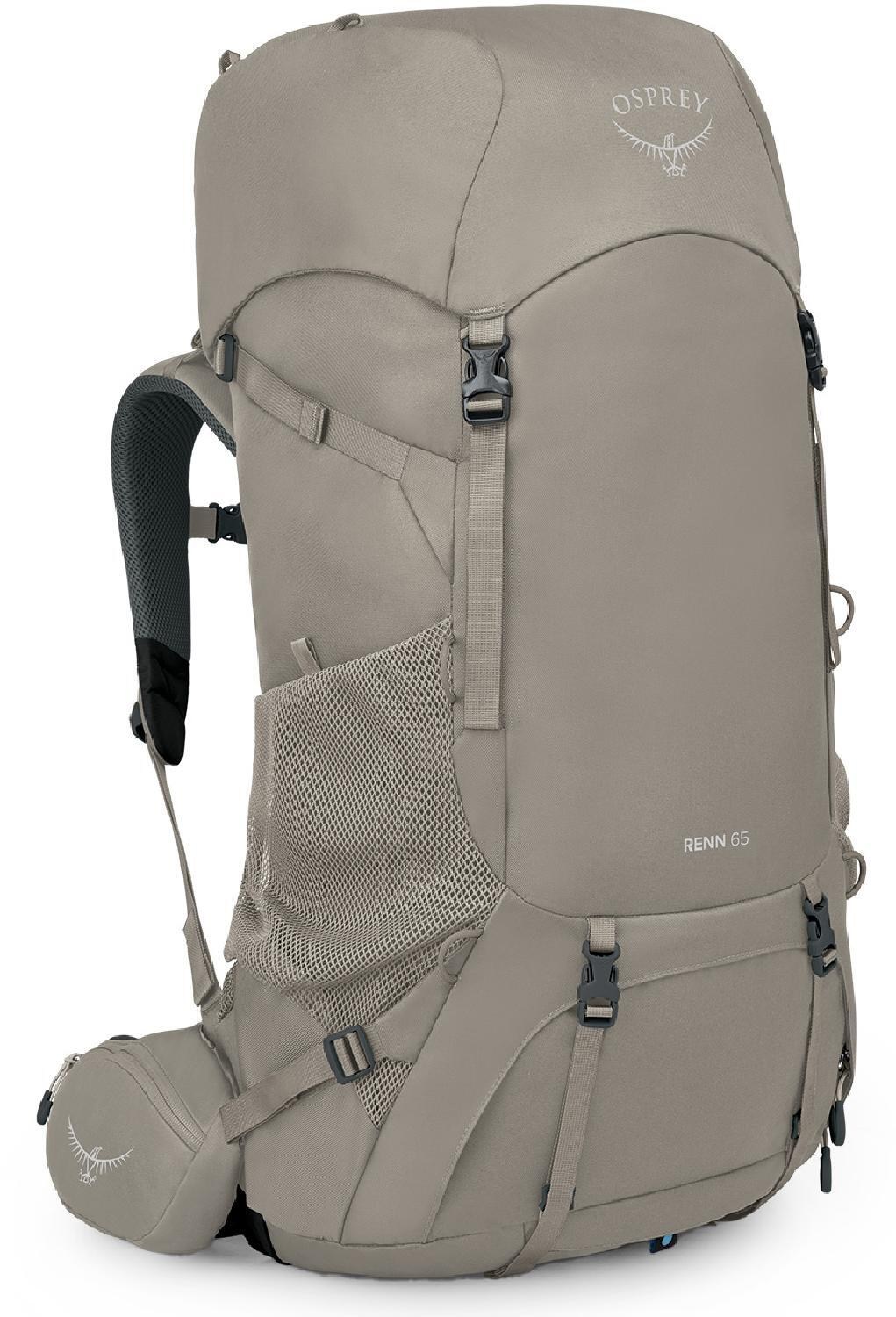 Weight: 3 lb. 9.6 oz.
Weight: 3 lb. 9.6 oz.
Fabric: Polyester (600D)
Capacities: 50, 65L
What we like: A very durable and supportive backpack for under $200.
What we don’t: Limited organization and sizing options.
The fourth and final Osprey design to make our list is the Renn, which is their entry-level offering. Aside from price, the Renn’s most standout features are its durable construction (the body is mostly 600D polyester) and impressive carrying comfort. In fact, our tester came away impressed by the pack’s support despite exceeding its 40-pound limit on a four-day trek in Canada’s rugged and remote Tombstone mountains. The Renn also features an adjustable torso length, meaning it can be easily shared or passed down between users, and checks in at a reasonable 3 pounds 9.6 ounces. Finally, all the expected bells and whistles are present, including hipbelt pockets, a ventilated backpanel, side dump pockets, and a dedicated sleeping bag compartment.
That said, there are a few reasons we hesitate to recommend the Renn over the more affordable REI Flash above. For one, there’s no large front pocket, which is a feature we’ve come to rely on for quick access to items like a jacket or water filter. Second, the fixed lid impacts versatility—we often like to remove our lid for organization at camp or go without it when carrying a half-full load. And finally, the pack is only available in one size (along with an Extended Fit version) and features less fit customization than pricier alternatives like the Aura AG LT or Ariel above. But if you’re looking to keep costs low without sacrificing Osprey’s signature comfort and support, the Renn could be just the ticket.
Read more: Osprey Renn 65 review
See the Osprey Renn 65
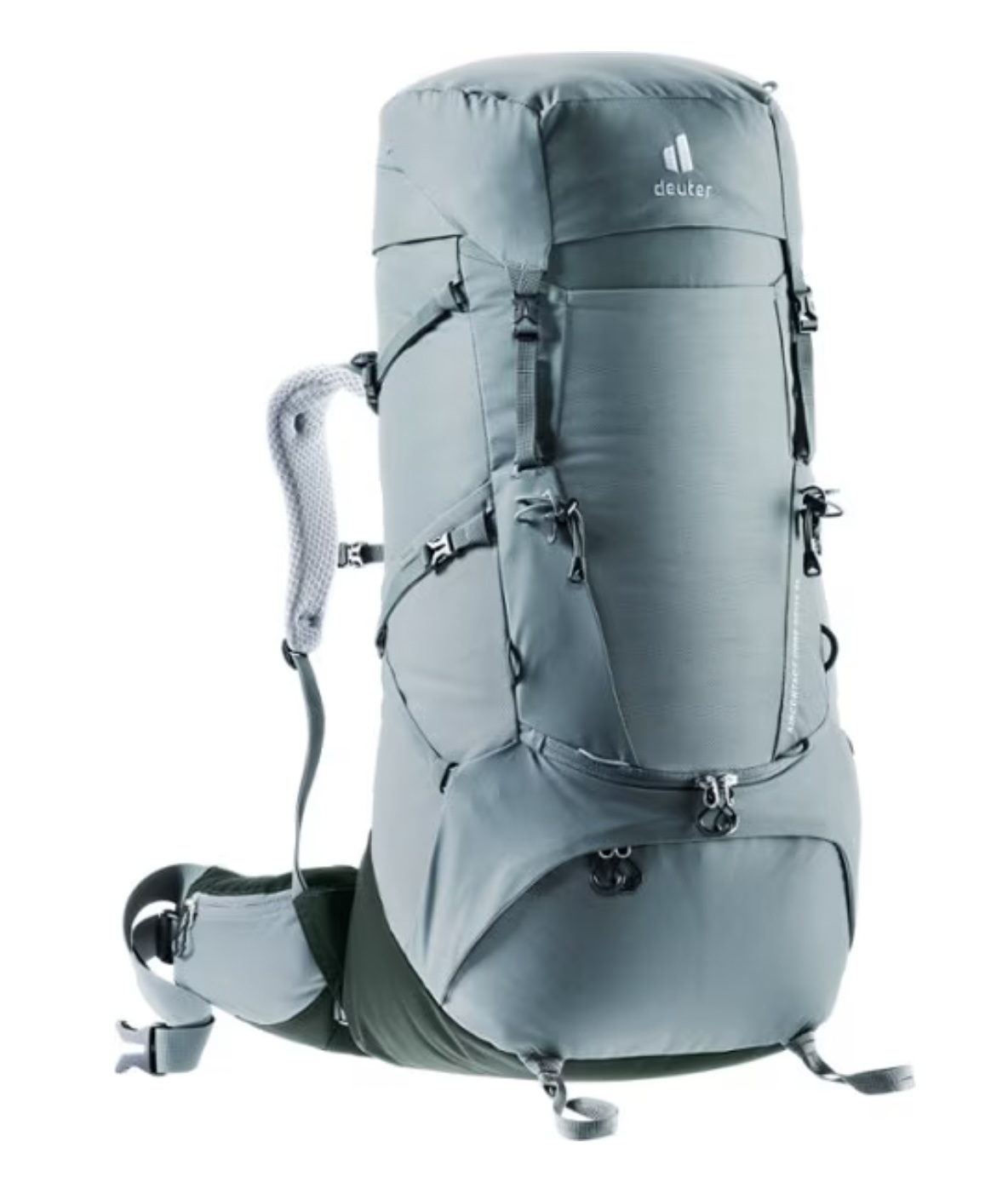 Weight: 4 lb. 11.8 oz.
Weight: 4 lb. 11.8 oz.
Fabric: Nylon (235D & 500D)
Capacities: 55, 70L
What we like: Great comfort and organization at a competitive price.
What we don’t: Only available in one size; 44-pound max load limit is relatively low.
Germany-based Deuter has been producing quality packs for well over a century, and their current lineup stacks up competitively with leading designs from Osprey and Gregory. Slotting in as the brand’s all-rounder, the Aircontact Core puts a premium on comfort and organization. Similar to models like the Osprey Ariel and Gregory Deva above, the Aircontact boasts a well-executed suspension system and harness, good torso adjustability, and ample storage in the form of dual hipbelt and lid pockets, plus a useful J-shaped zipper for secondary access to the main compartment. After testing the pack on a multi-day trip in Washington’s Glacier Peak Wilderness, we came away highly impressed by the comfortable and well-organized design during long days on the trail.
The Aircontact Core is a standout value for those uninterested in shelling out $300+ for a backpack, but it does come with some shortcomings compared to the Ariel and Deva. Despite clocking in at a similar weight, the Deuter’s load limit maxes out at just 44 pounds (the Osprey and Gregory packs have 55- to 60-lb. limits). Deuter also only sells the pack in a single size, which may not work for some women. But if you’re willing to expand your search outside of the standard fare (and can achieve a good all-around fit), the Aircontact is a decidedly well-rounded pack that will save you a considerable chunk of change. It’s also worth considering their Aircontact Ultra, a lightweight option that goes head-to-head with the likes of the Eja and Facet.
Read more: Deuter Aircontact Core review
See the Deuter Aircontact Core 60 + 10 SL
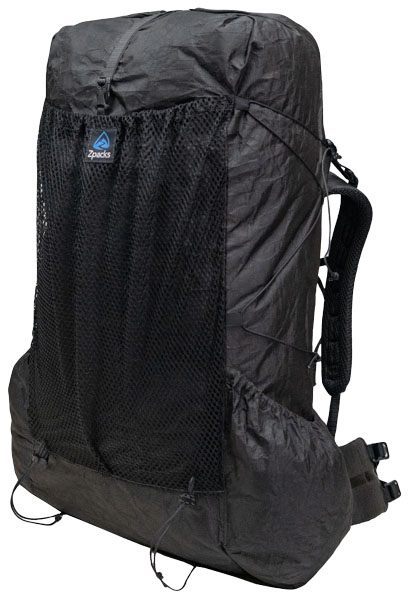 Weight: 1 lb. 4.5 oz.
Weight: 1 lb. 4.5 oz.
Fabric: Ultra (100D)
Capacity: 60L
What we like: Incredibly lightweight; better ventilated than the Hyperlite Southwest.
What we don’t: Not very durable and doesn’t carry loads as well as other UL packs.
Weighing nearly 10 ounces less than the next-lightest pack on our list, the Zpacks Arc Haul Ultra 60L handily takes the ultralight crown. The pack achieves its 1-pound-4.5-ounce weight (for a women’s medium) with a specialized build that's made from Ultra High Molecular Weight Polyethylene (UHMWPE) laminated to a waterproof lining. Dubbed Ultra 100, the fabric offers comparable strength and abrasion resistance to Dyneema for minimal weight (note: It's the same material used in ULA's Circuit and BD's Beta Light above, albeit notably thinner). The pack also cuts out the need for a foam backpanel with a unique “Arc” tensioning system that pulls the middle of the bag away from your back (this also helps a great deal with ventilation). Finally, the Arc Haul Ultra uses an ultralight carbon fiber frame and very basic organization, with just one main compartment and three external pockets (you can add extras like hipbelt pockets to your order, which weigh 0.8 oz. each).
The Zpacks is undeniably lightweight and, in our experience, surprisingly comfortable with a 30-pound load (we'd hesitate to push it all the way to its advertised 40-lb. load limit). That said, we’ve found its thin fabric lacks durability for rough treatment and off-trail scrambling, and the tmesh front pocket can’t match the Southwest’s Dyneema pockets or the more abrasion-resistant "UltraStretch" pocket on the ULA Ultra Circuit. The pocket layout is also very limited: We wish Zpacks included an internal zippered pocket and/or hipbelt pocket. Both can be purchased separately, but the accessories add both weight and cost. And finally, at $399, the Zpacks isn’t a great value, especially considering its very specialized build. But for serious hikers and minimalist trekkers who prize weight savings above all else (you know who you are), it’s a reliable option that will shave considerable ounces from your back.
See the Zpacks Arc Haul Ultra 60L
| Backpack | Price | Weight | Fabric | Capacities | Access | Pockets |
|---|---|---|---|---|---|---|
| Osprey Aura AG LT 65 | $320 | 4 lb. 0.2 oz. | Nylon (210D & 500D) | 50, 65L | Top, side | 6 exterior |
| REI Co-op Flash 55 | $199 | 2 lb. 12.0 oz. | Nylon (100D & 210D) | 55L | Top | 6 exterior |
| $380 |
2 lb. 4.8 oz. |
Ultra (200D & 400D) | 68L | Top | 5 exterior | |
| Gregory Deva 70 | $380 | 5 lb. 1.0 oz. | Nylon (210D & 420D) | 60, 70, 80L | Top, front | 9 exterior |
| Osprey Eja 58 | $280 | 2 lb. 13.2 oz. | Nylon (100D & 400D) | 38, 48, 58L | Top | 6 exterior |
| Gregory Jade 63 Plus Size | $280 | 4 lb. 2.6 oz. | Polyester (400D & 420D) | 63L | Top, front | 6 exterior |
| Gossamer Gear Mariposa | $315 | 2 lb. 2.2 oz. | Robic nylon (100D & 210D) | 60L | Top | 7 exterior |
| Granite Gear Blaze 60 | $300 | 3 lb. 0 oz. | Robic nylon (100D & 210D) | 60L | Top, side | 6 exterior |
| Hyperlite Southwest 55 | $399 | 1 lb. 14.8 oz. | Dyneema Woven Composite 3.9 | 40, 55, 70L | Top | 5 exterior |
| Gregory Facet 55 | $270 | 2 lb. 8.8 oz. | Nylon (100D & 210D) | 45, 55L | Top | 6 exterior |
| Rab Hyperon ND65L | $350 | 5 lb. 5.0 oz. | Robic nylon (210D) | 65, 80L | Top, front | 6 exterior |
| Gregory Maven 58 | $270 | 3 lb. 8.0 oz. | Nylon (100D, 210D, 300D) | 48, 58, 68L | Top, side | 7 exterior |
| Osprey Ariel 65 | $345 | 4 lb. 14.3 oz. | Nylon (210D & 420D) | 55, 65L | Top, front | 7 exterior |
| BD Beta Light 45 | $400 | 1 lb. 15.4 oz. | Ultra (200 & 400D) | 30, 45L | Top | 6 exterior |
| REI Co-op Trailmade 60 | $179 | 3 lb. 4.0 oz. | Nylon | 60L | Top | 6 exterior |
| Osprey Renn 65 | $200 | 3 lb. 9.6 oz. | Polyester (600D) | 50, 65L | Top | 5 exterior |
| Deuter Aircontact Core 60 | $260 | 4 lb. 11.8 oz. | Nylon (235D & 500D) | 55, 70L | Top, front | 6 exterior |
| Zpacks Arc Haul Ultra 60L | $399 | 1 lb. 4.5 oz. | Ultra 100 (3.3 oz./sqyd) | 60L | Top | 3 exterior |
Many folks on the Switchback Travel team are avid backpackers, including all of our female staff. To supplement our unisex backpacking pack guide, former senior editor Jenny Abegg put together our initial list of 16 women’s-specific picks in early 2023. An ardent ultrarunner and mountaineer, Jenny has an affinity for ultralight gear but is no stranger to hauling serious weight into the backcountry—from close-to-home outings in the North Cascades to far-off alpine adventures in southern Patagonia. Contributing editor Maggie Slepian took over the guide in 2024, using her decade of technical gear testing and numerous thru-hikes to refine the list. While many of our original picks remain, some have seen notable changes, and all materials and specs have been updated to reflect current offerings.
Our lineup of 18 women's packs above is the result of our collective experiences on the trail, along with feedback from our network of testers and backpacking-savvy friends. As women who spend a lot of time outside, we’re familiar with the plight of finding a well-fitting pack that’s comfortable to carry and holds up over time (there’s always a trade-off). When we test backpacking packs, we take them on trips ranging from a few nights to a week (or more) and pay attention to the comfort of the padding along the shoulder straps and hipbelt, how well the fabrics hold up against abrasive surfaces like rocks and branches, and how sweaty our backs get. We also dial in all of the adjustments and utilize all of the pockets to understand how the features work. As we continue testing, we’ll add and remove options above depending on their performance.
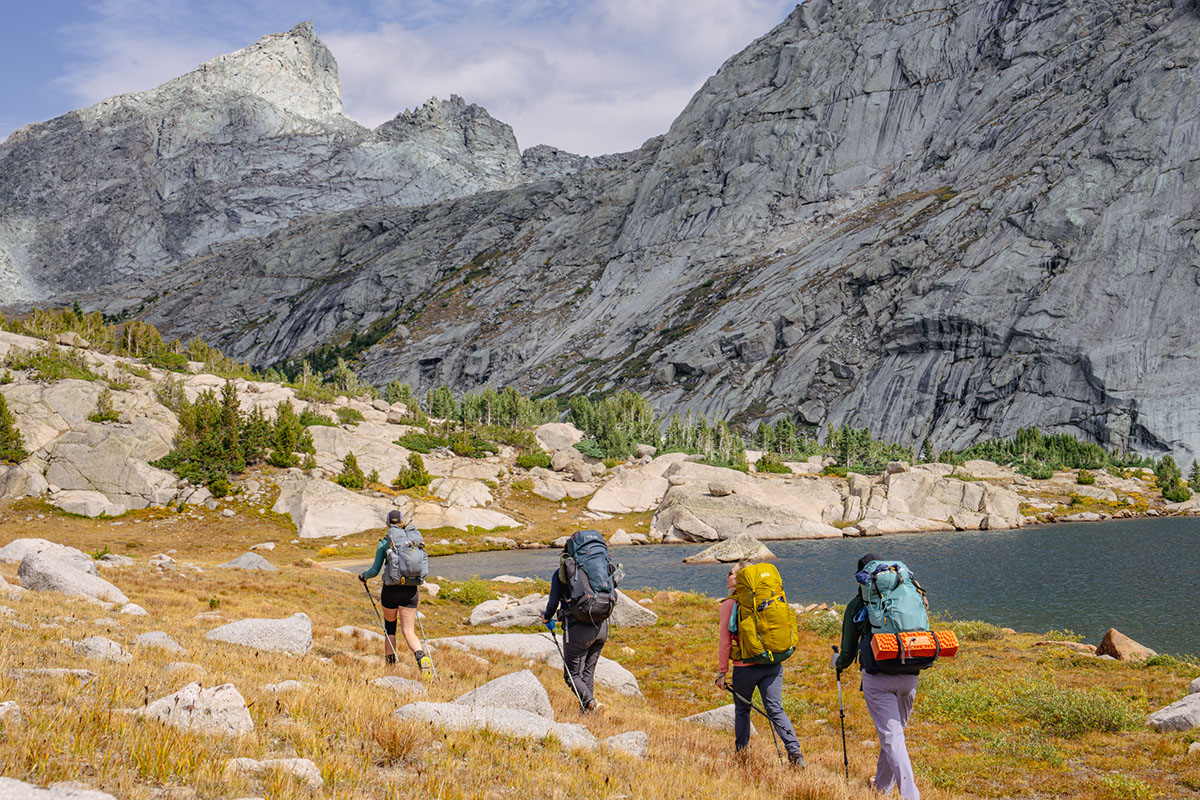
Multiple factors come into play when choosing backpack capacity, including how many nights you plan to stay out, the season and expected conditions (you'll need bulkier gear for cold weather), and if you’re planning any extra activities like mountaineering or packrafting while you're out. Most backpackers embark on two- or three-day trips, and packs in the 45- to 60-liter range will work well for those outings. If you opt for a smaller pack, your key gear will have to be relatively streamlined (including your backpacking tent, sleeping bag, and sleeping pad). We recommend sticking to the essentials and bringing lightweight, packable (i.e., dehydrated) backpacking food. A 60-liter (or more) pack has enough capacity to carry a week’s worth of food and a few additional items—great for gear-heavy trips or parents with kids.
Remember to consider the nuances of your trip and gear when choosing backpack capacity. Here are our general guidelines for anyone who doesn't pack ultralight:
Overnight and/or ultralight gear: 35-55 liters
Long weekend (2-3 nights): 50-70 liters
Extended trips (over 3 days): 60+ liters
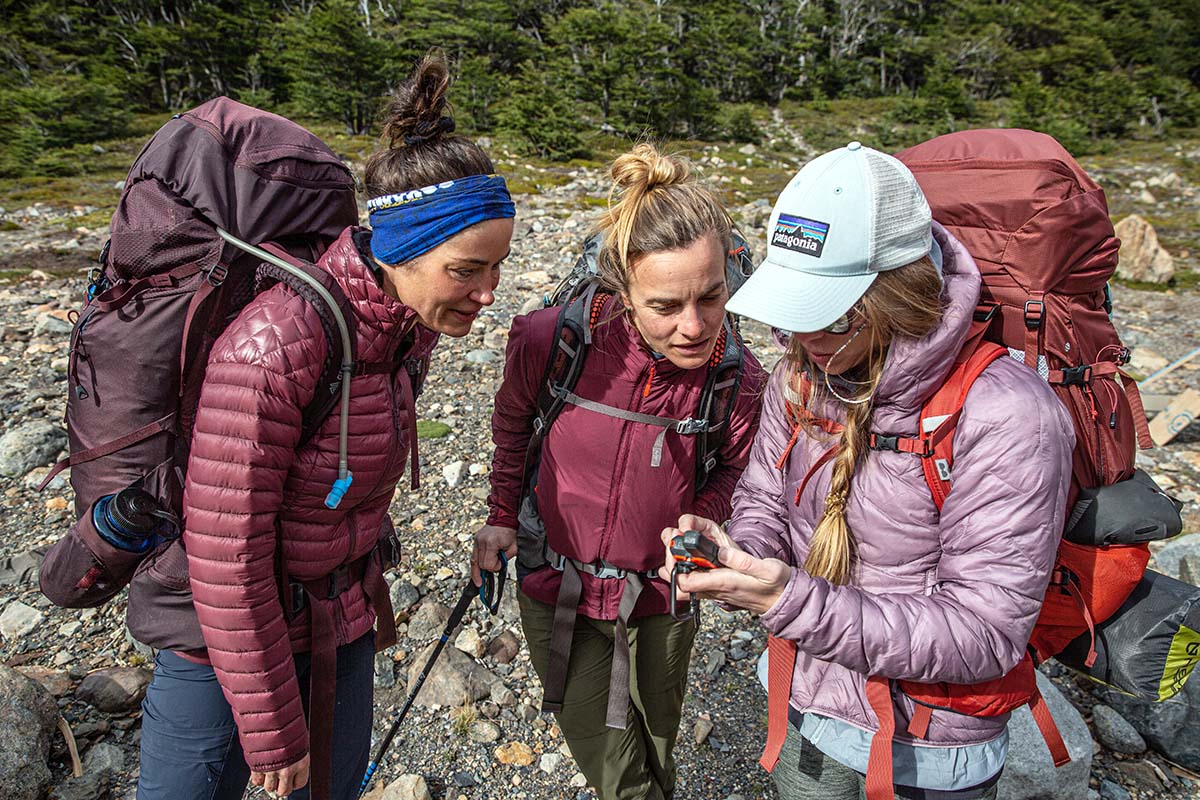
In addition to the volume of space your gear takes up, it’s also important to consider its overall weight. Backpackers refer to carried items (minus food and water) as "base weight," and this number can range from an ultralight 7 pounds up to 20 pounds or more. Once you add consumables, you can be carrying anywhere from 15 to 50 pounds on your back. We recommend prioritizing lowering your base weight, as most backpackers feel more comfortable hiking with a lighter load.
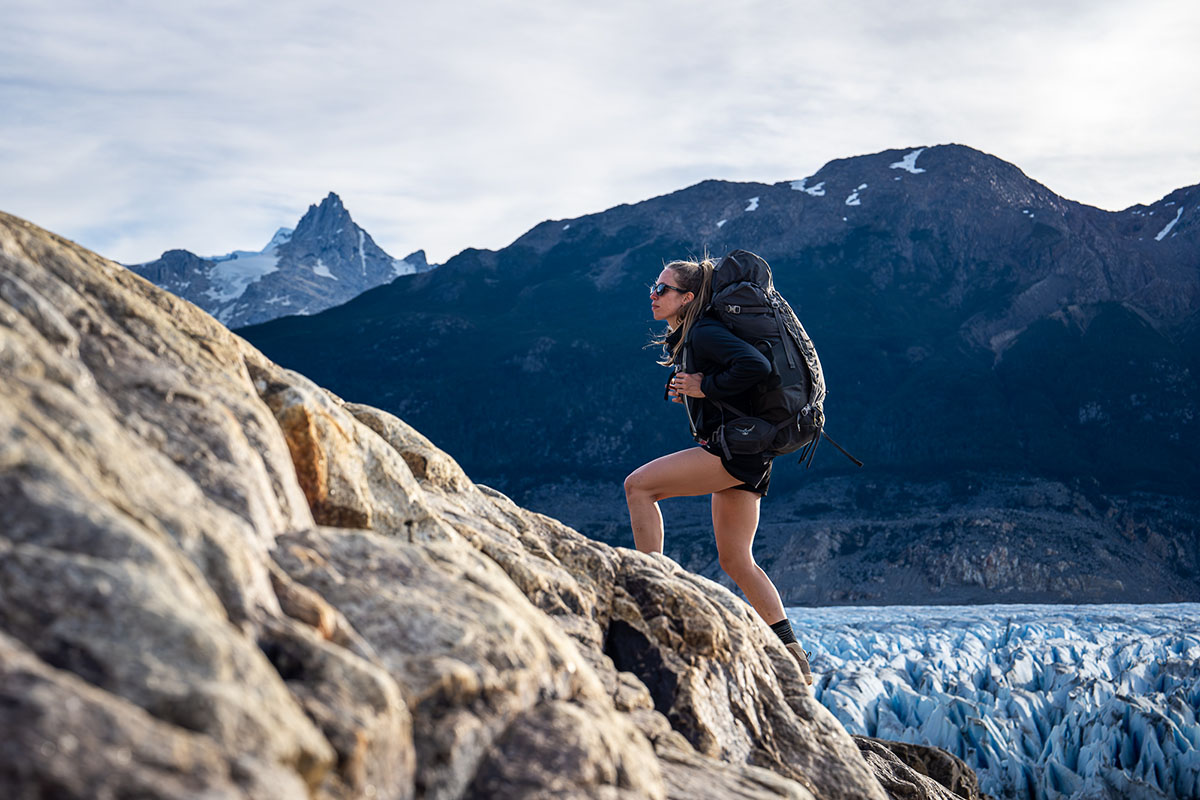
Most manufacturers provide a load limit (or range) for each pack model. In our 2024 picks, these range from 30 pounds for the REI Co-op Flash 55 up to 60 pounds for the Osprey Ariel 65. Several factors influence a pack's load limit, such as the materials and construction of its frame, suspension, and padding. If you don't find a specified load limit, the pack's empty weight can serve as a useful reference point. A heavier pack typically indicates greater carrying capacity due to its sturdy frame, durable fabrics, and ample padding. We believe load limits should be treated more as directives than suggestions, and we've found that exceeding a pack's load limit leads to a discernible decrease in comfort.
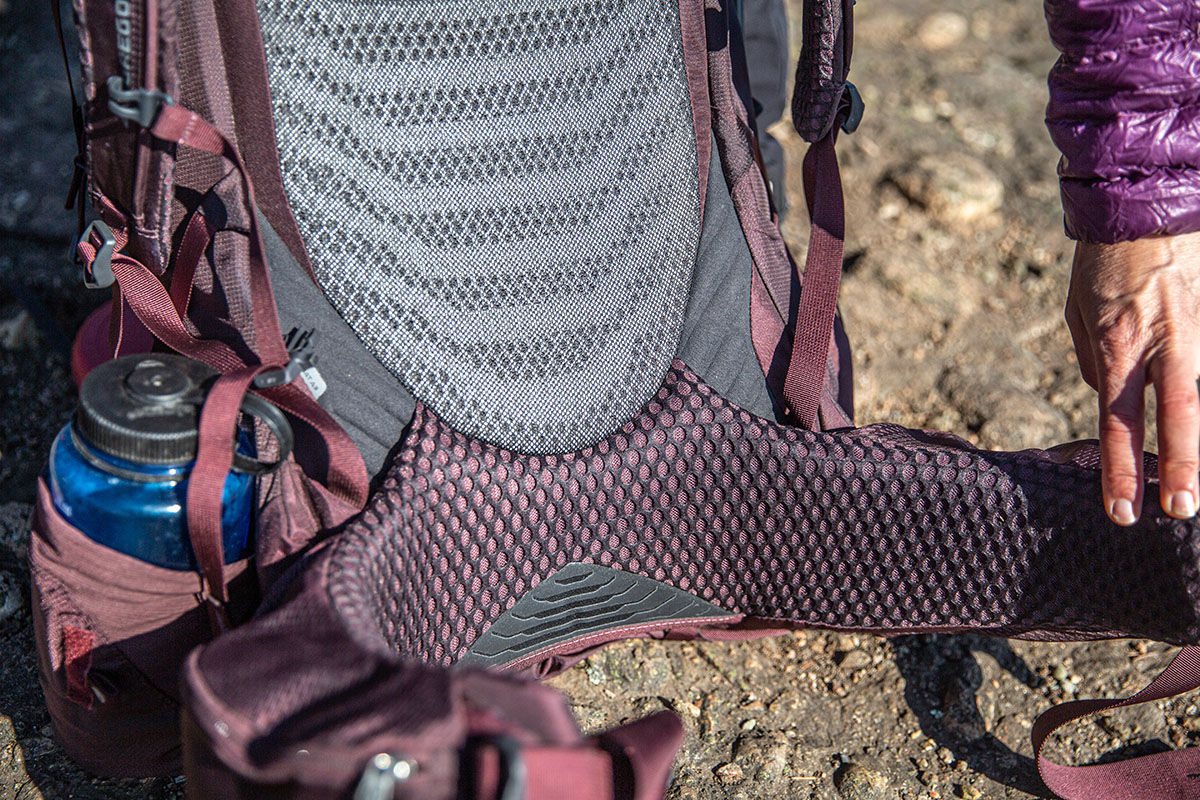
The backpacks listed above range in weight from 1 pound 4.5 ounces for the Zpacks Arc Haul Ultra 60L to 5 pounds 5 ounces for the Rab Hyperon ND65L. Backpack weight presents a trade-off: While a heavier pack adds additional pounds to your load, that weight is going towards padding and load-carrying ability. Heavier packs typically feature sturdy suspension systems and harnesses that enhance comfort and distribute the load more effectively compared to simpler, lighter designs. We’ve found that packs in the 2.5- to 4-pound range—such as the Osprey Aura AG LT 65 (4 lb. 0.2 oz.) and Gregory Facet 55 (2 lb. 8.8 oz.)—strike a nice balance of weight and performance for loads up to about 35 pounds. If you anticipate a heavier load, it’s worth considering a heavier pack, while ultralight backpackers have the option of simplified, lighter designs like the Zpacks Arc Haul Ultra 60L or Gossamer Gear Mariposa 60.
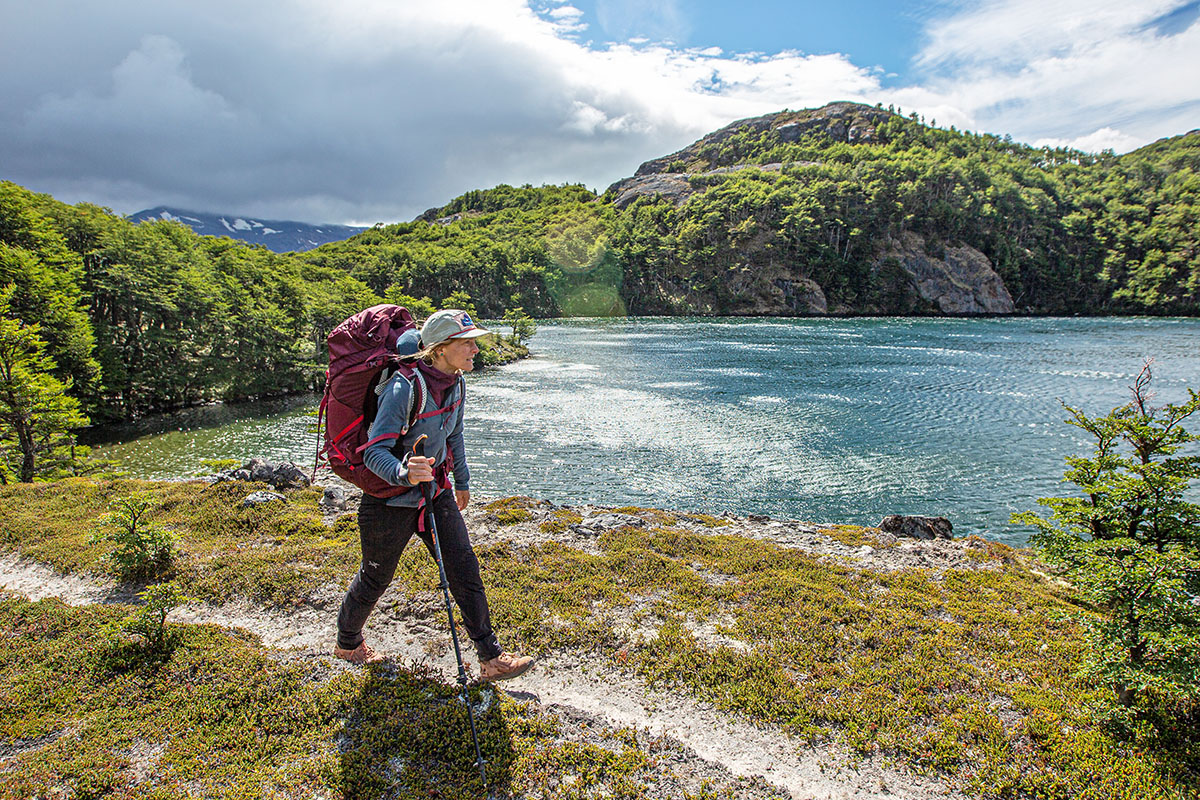
Ultralight Backpacks
Weight is such a crucial consideration for many backpackers that a whole category has emerged based on this spec alone. Ultralight—or UL—packs shave roughly 2 to 3 pounds off the weight of standard designs and feature streamlined storage (most have one main compartment, hipbelt pockets, and a few exterior pockets). In addition to minimalist organization, they also use ultralight, premium materials like Dyneema, Ultra, and Robic nylon, plus simple suspension systems that generally include only an aluminum stay and foam backpanel. As a result, ultralight backpacks can compromise on comfort, especially with loads greater than 25-30 pounds. But for ounce-counters looking to keep weight to a minimum, the difference between a traditional and UL pack can be significant. For a deep dive into this category, see our article on the best ultralight backpacks.
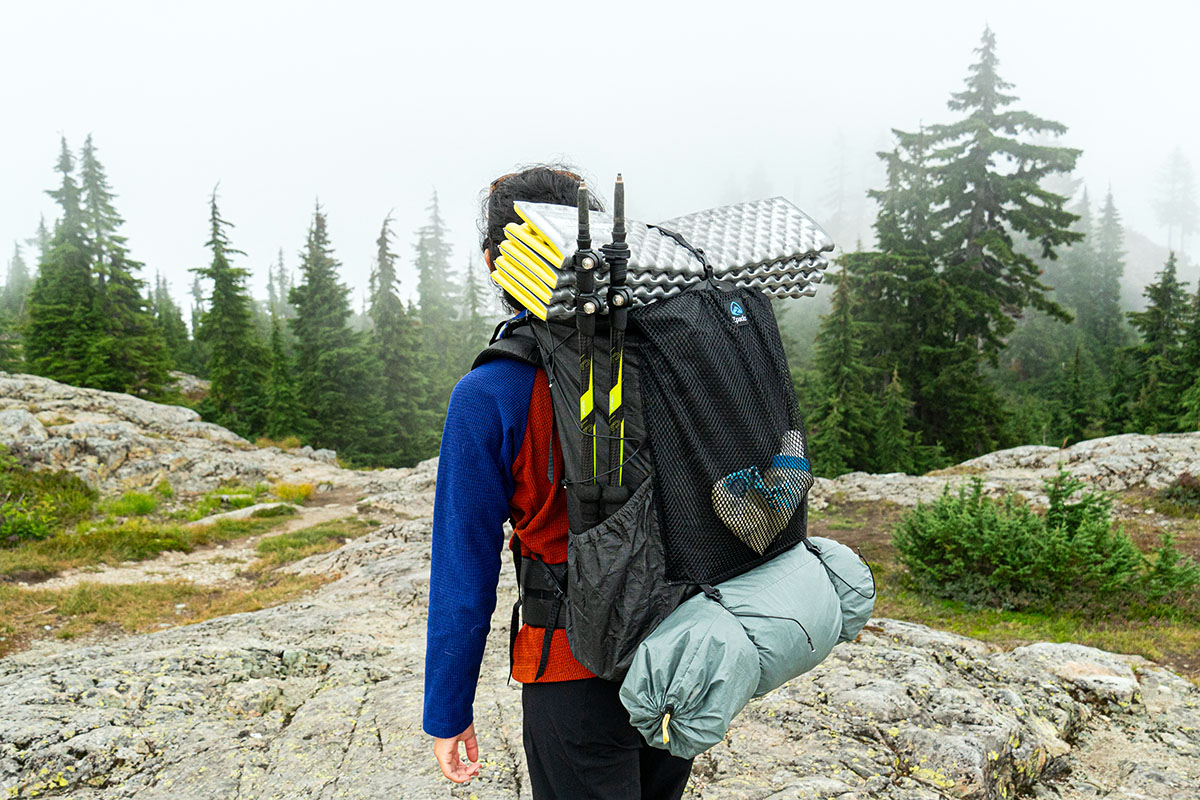
Every backpacking pack on our list is built to stand up to abuse. What other piece of gear do you squeeze through rock slots, rake across sharp branches, chuck on the ground, and sit on? That said, not all packs are created equal, and some are more durable than others. When you’re evaluating the durability of a pack, fabric denier (a measure of the fabric's thickness) is a good place to start. The packs on our list range from 100D to 600D, with high-abrasion areas—most notably the bottom—often reinforced with thicker fabrics.
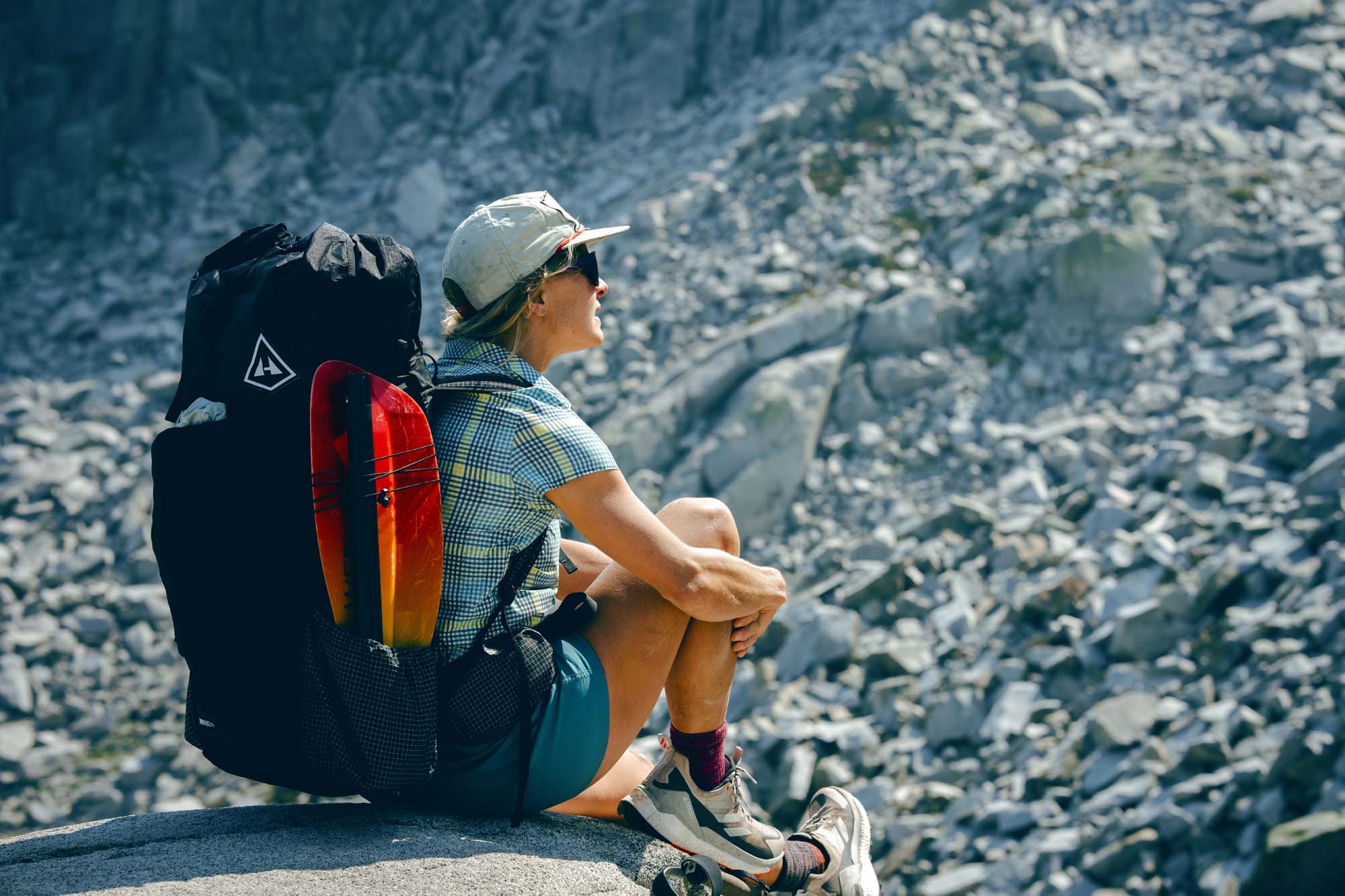
The main trade-off with thicker fabrics is added weight, which means that lightweight and ultralight backpacks often sacrifice some durability. One solution common among premium UL backpacks is the use of Dyneema or Ultra—materials known for their incredible strength-to-weight ratio. However, thin fabrics shouldn’t be a total deterrent unless you’re particularly hard on your gear, love to bushwhack, or wear a backpack for trail crew or guiding. In fact, we’ve been downright impressed with the durability of lighter designs like the Gregory Facet (100D & 210D) and Osprey Eja (100D & 400D).
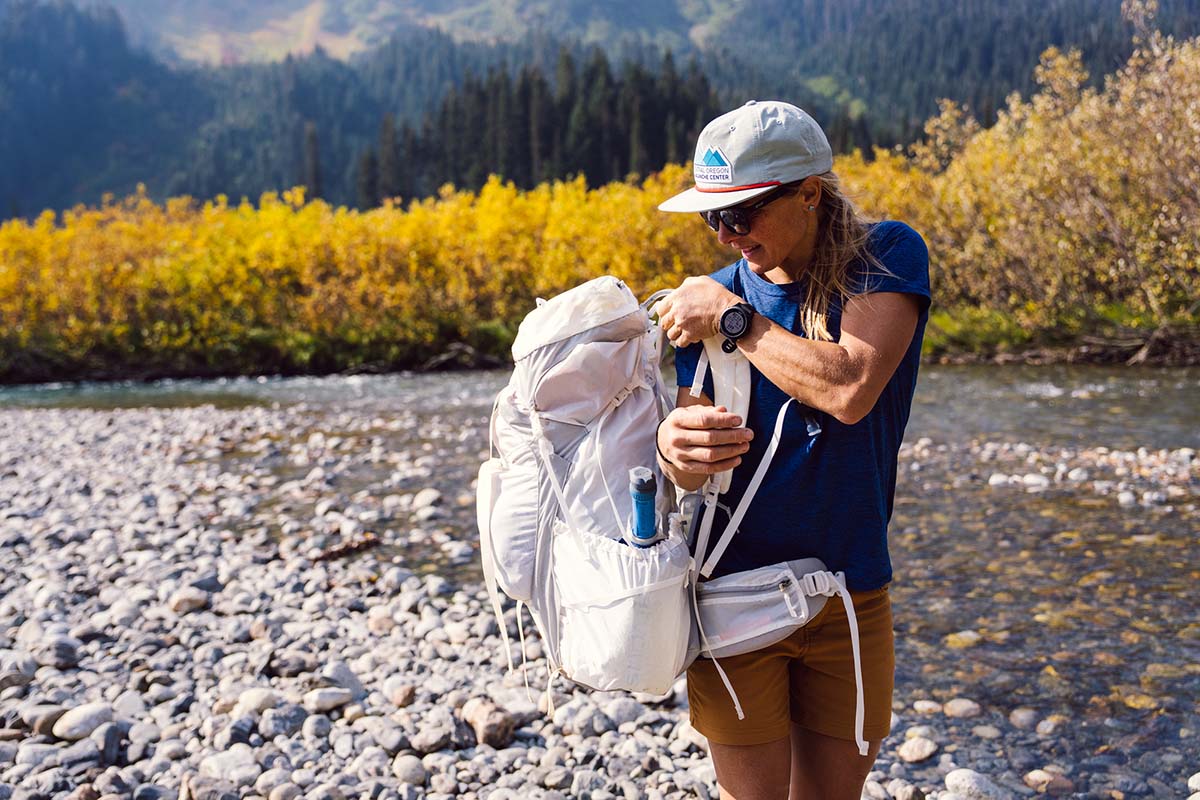
Foam padding is a requisite feature among overnight packs, often used along the shoulder straps, hipbelt, and sometimes backpanel. This padding varies in terms of thickness and quality, with the goal being increased comfort, better load distribution, and isolation from the contents of your pack. The foam (and fabric that covers it) add weight, so manufacturers are always looking for the ideal balance between weight and comfort. As a general rule, heavier packs have more padding (and are more comfortable as a result), while lighter designs use less (which means less comfort, especially under heavy loads).
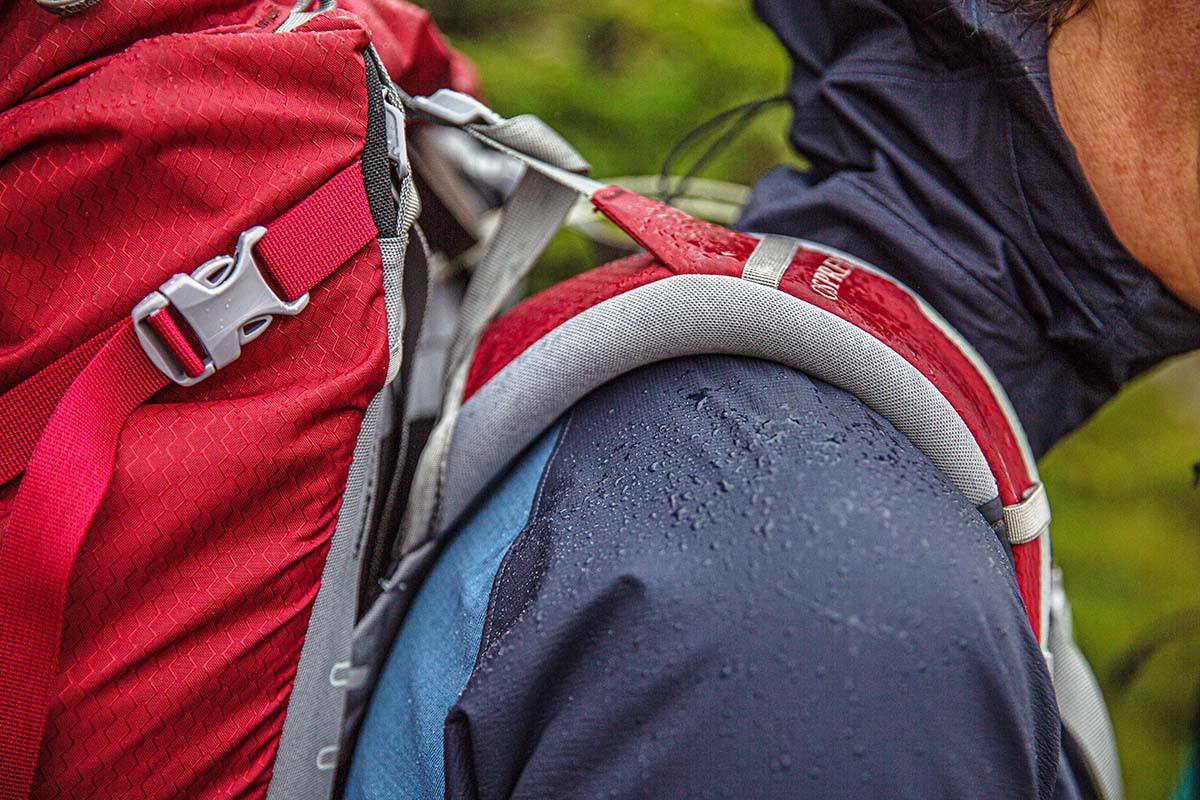
We look for foam that errs towards firm and supportive rather than overly soft and squishy. While it may feel great when trying on packs, excessively plush padding will pack out and lose its supportiveness—a major downside when shuttling significant weight. Designs like the Gregory Deva and Osprey Ariel are great examples of packs with firm but comfortable and high-quality padding. On the flip side, some models—like the Osprey Aura and Eja—swap out some foam for suspended mesh to minimize weight while boosting ventilation, which we’ve found to be effective and still comfortable. In fact, with loads less than around 40 pounds, these airy backpanels offer just as much comfort as their foam counterparts, plus better breathability.
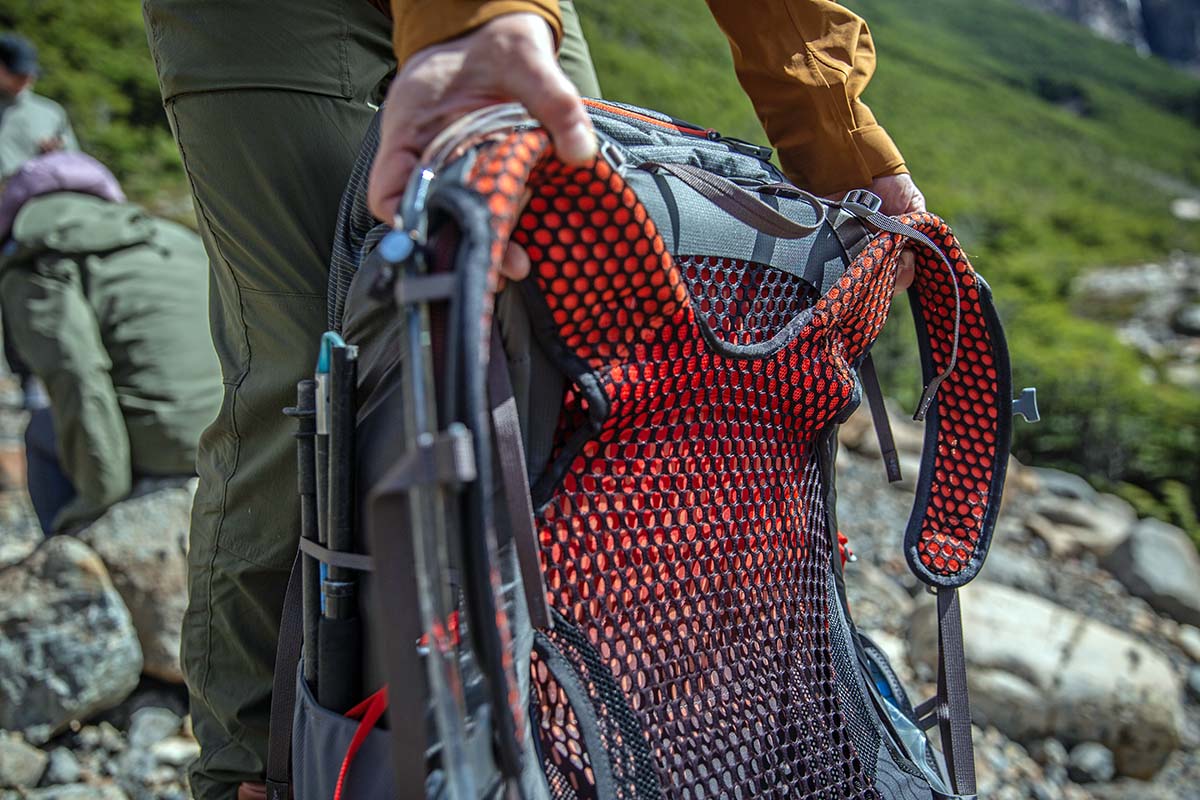
Staying organized when you’re packing a week’s worth of gear (or more) can be a challenge, which is why we value packs that have well-sorted—but not overly complex—storage layouts. As expected, organization and weight are often at odds: Ultralight packs are typically built with just one cavernous main compartment and a few external pockets, while feature-rich heavy haulers often have a dedicated sleeping bag compartment, multiple access points to the main compartment, a lid, and more external storage. However, we've found that there's a sweet spot: The amount of pockets and lash points you need is a personal preference, and sometimes too many options can make it harder to stay organized.
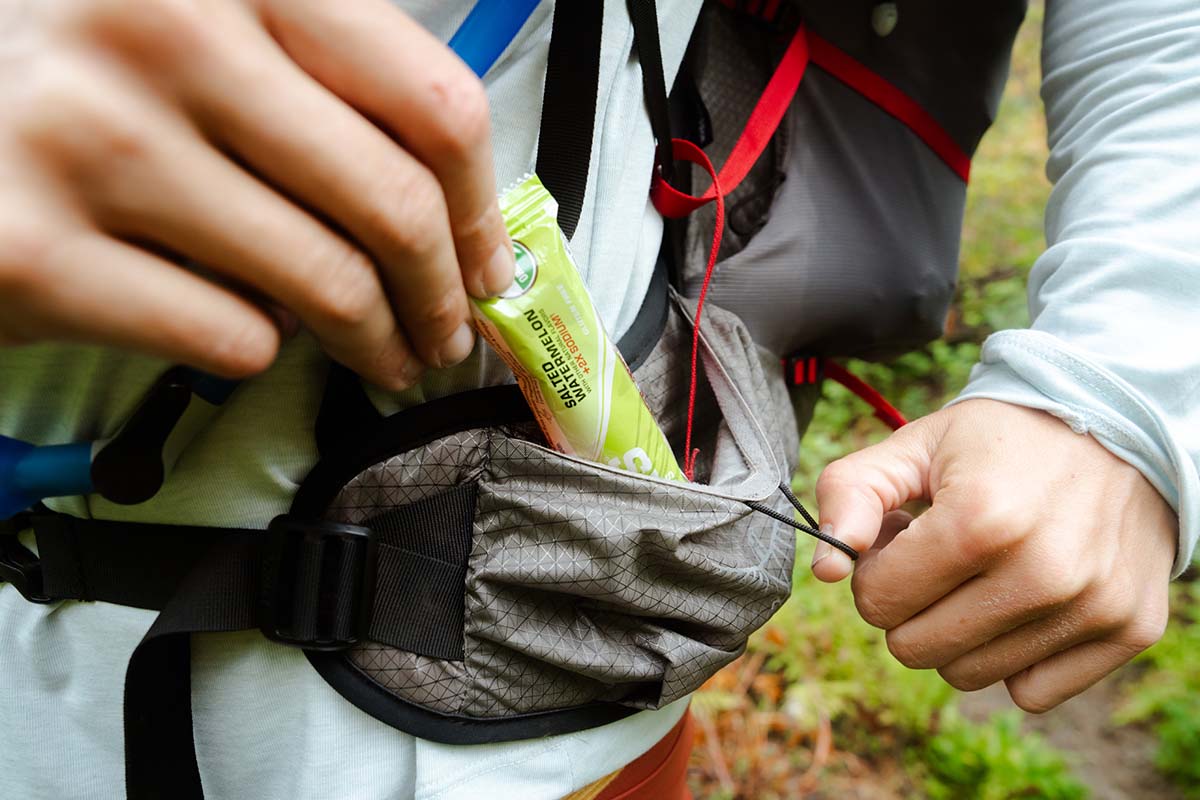
Main Compartment Access
Most backpacking packs—including all of those on our list above—have top openings secured with either a cinch cord or roll-top. These packs are referred to as top-loaders. Some designs also offer additional access to the bottom or middle of the pack via a side or U-shaped zipper. These added openings make it much easier to find and retrieve items deep inside your pack without having to rummage through or remove all of your belongings. Some openings, like on the Gregory Deva or Osprey Ariel, are so wide that you can essentially access the entire main compartment at once (similar to a clamshell opening common among travel packs).
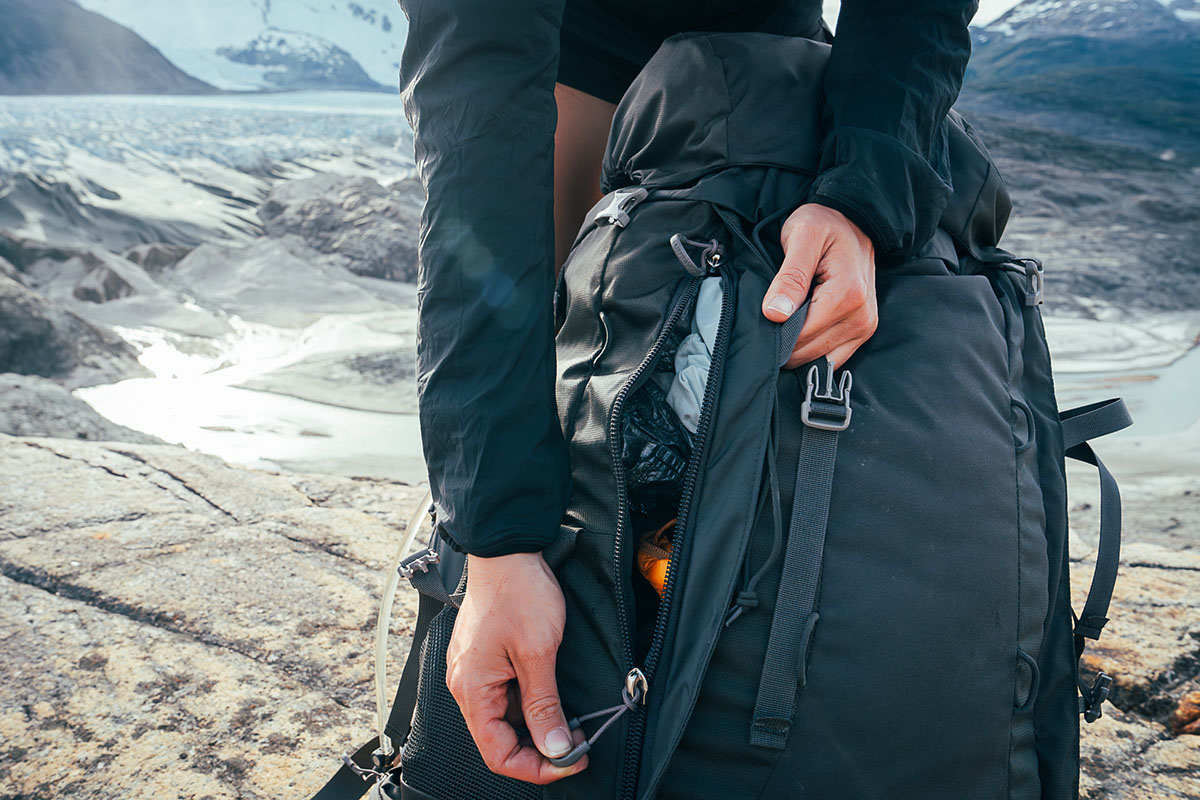
Exterior Pockets
We listed the number of external pockets for each pack in our comparison table above, and you’ll see most packs have at least five—three drop-in pockets and two hipbelt pockets. Some of the more feature-rich designs tack on several more. Hipbelt pockets are invaluable for on-the-go access to trail snacks, Chapstick, and ideally a phone. We often stash a spare layer or two in the stretchy front pocket, and side pockets are perfect for water bottles, trekking poles, or tent poles. Finally, most packs (with the exception of some UL models) include a top lid that includes at least one zippered pocket. This area is ideal for storing smaller items like a headlamp or sunscreen, and some lids can be removed for toting essentials around camp. But remember that sometimes less is more: We’ve found five or six pockets to be the sweet spot, while nine makes it easy to lose things. Plus, you can always use stuff sacks to divvy up smaller items inside the main compartment.
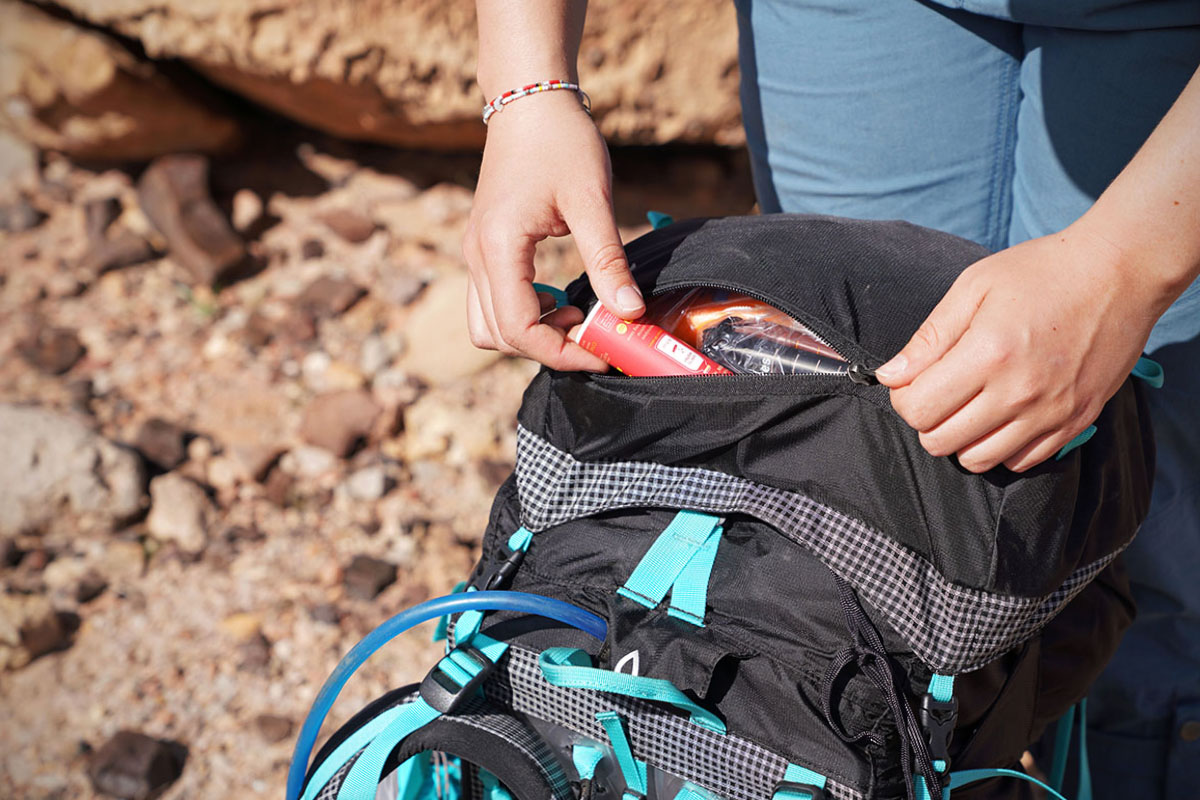
Sleeping Bag Compartment
Many fully featured designs include a dedicated space for sleeping bag storage below the main compartment, often accessed via an external zipper. This area is big enough to fit most sleeping bags and features external straps to compress the load and minimize any unused space. In some cases, it’s possible to access the main compartment via a zippered divider, although we’re not fans of this design due to the added weight and bulk. Instead, we prefer packs without sleeping bag compartments that allow us to maximize the entire interior and slot items in where they fit best.
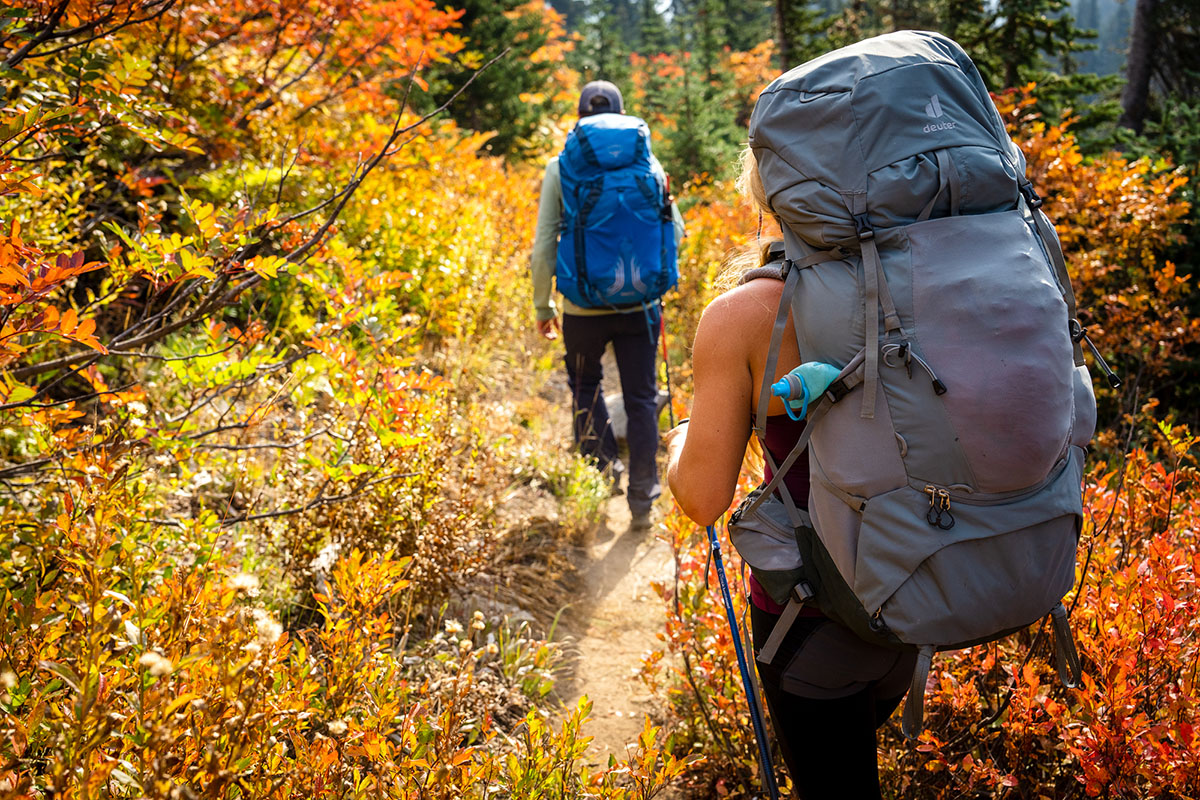
Water Reservoir (Bladder) Compatibility
Water reservoirs are a convenient way to stay hydrated on the trail, and most backpacking packs offer features to accommodate them. These can include a dedicated sleeve or clip from which to hang the reservoir, along with an exit port for the tube and clips or magnets to secure the tube to the shoulder strap. If you opt for a hydration bladder over a water bottle, try to remember to load it before the rest of your gear so it can lay flat along the length of the backpanel. If you forgot about it until you’re already packed (as we often do), don’t fret: Just rest it on top of your gear or stash it in the front dump pocket (if it’s stretchy enough) until the next time you unload. To minimize sloshing, invert the reservoir and suck all the air out.
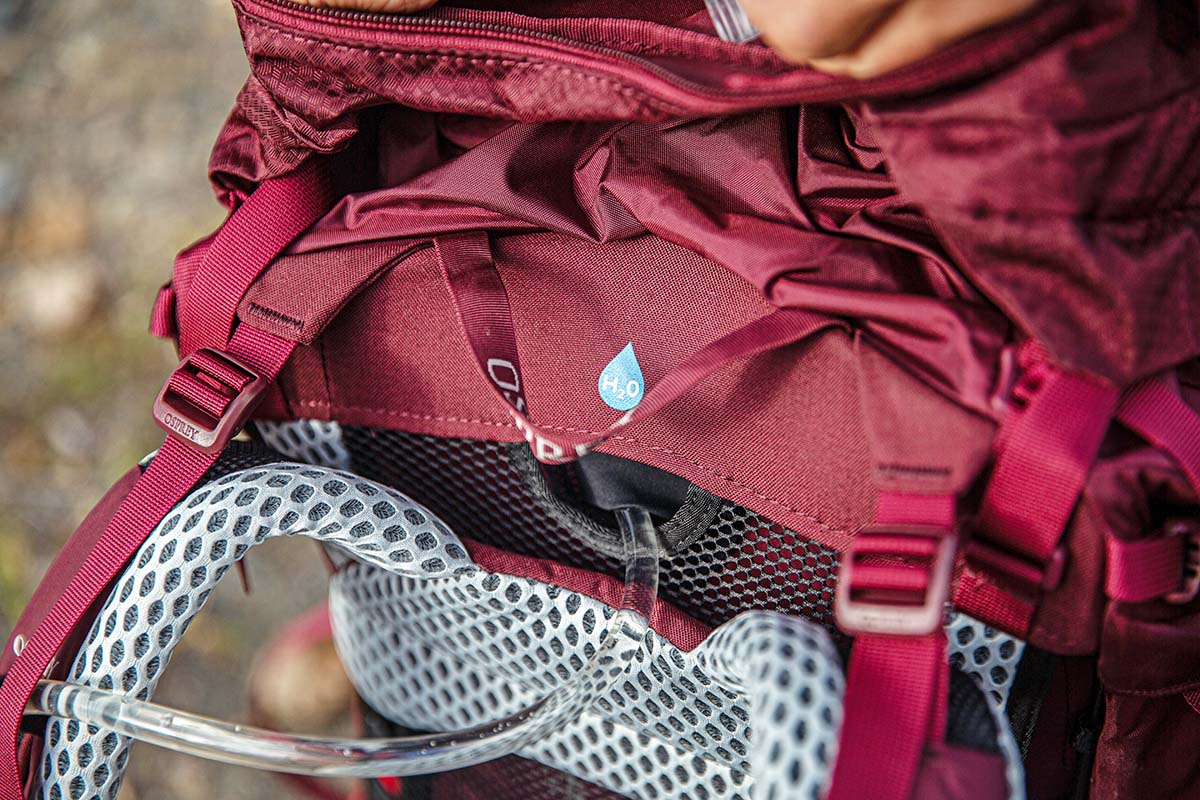
Compression Straps
Compression straps located at the sides of a pack tighten it from front to back to help keep the load close to your body. In addition to aiding with balance on the trail, getting a close fit can also reduce back strain. Look for side compression straps at the top and bottom to help with load stability, and give them a good cinch each time you pack your bag. Compression straps can also be handy for securing taller items like tent or trekking poles along the side(s) of your pack. We especially like the versatility of REI’s Packmod system (as seen on the Flash 55), which allows you to tweak the height of the straps—or remove them entirely—via daisy chains.
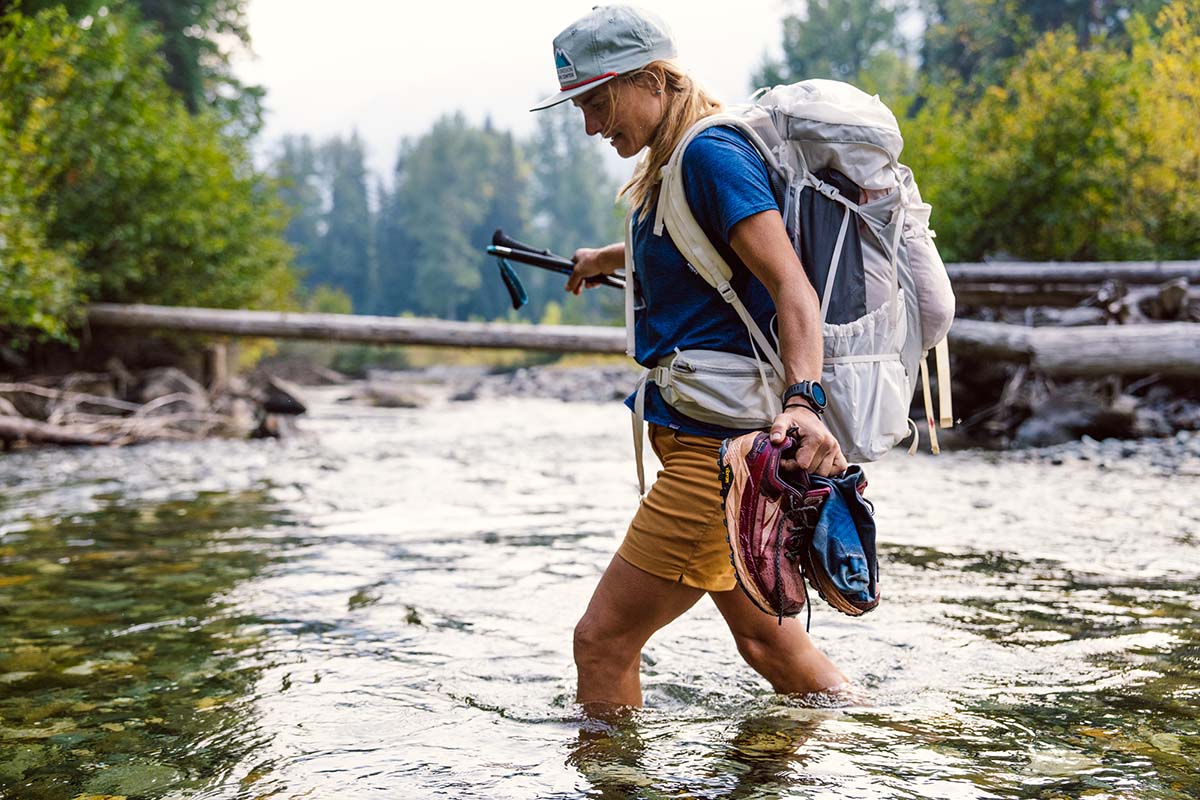
If you run warm or plan on hiking in the heat of the summer, backpanel and hipbelt ventilation should be a critical consideration. Finding a breathable design can be tough since the goal is for your pack to hug and conform to your body, but smart material and design choices can help maximize airflow with minimal impact on stability. Most packs are built with offsetting foam and mesh panels that do a decent job at promoting airflow, but you’ll likely still experience sweat where your body and the foam come in contact. Alternatively, some packs (like the Osprey Aura and Gregory Facet) feature fully suspended mesh backpanels and hipbelts that cradle the body while maintaining ample airflow. This can be a great solution for hikers who value maximum ventilation, although the trade-off is reduced load-carrying capacity.
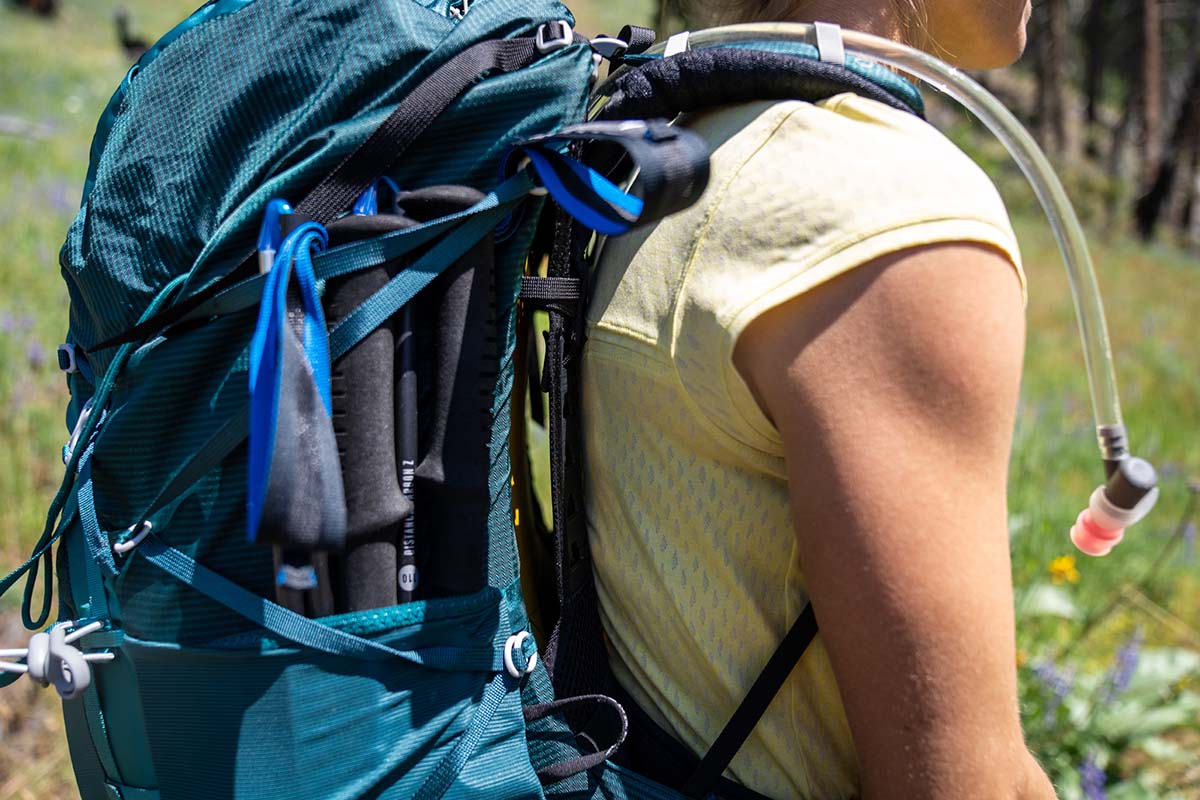
Plenty of our gear is vulnerable to moisture when backpacking—including cameras, phones, and down sleeping bags—so water protection is high on our priority list. Most packs offer decent weather resistance with hard-face nylon and a durable water repellent (DWR) treatment, although sustained moisture will eventually make its way through the coating and outer fabric. If protection is a concern, there are plenty of waterproof designs on the market, including packs made with Dyneema, X-Pac, or Ultra. These specialized packs are so reliable that we’ve used one (the Dyneema Hyperlite Windrider) as a dry bag with no issue.
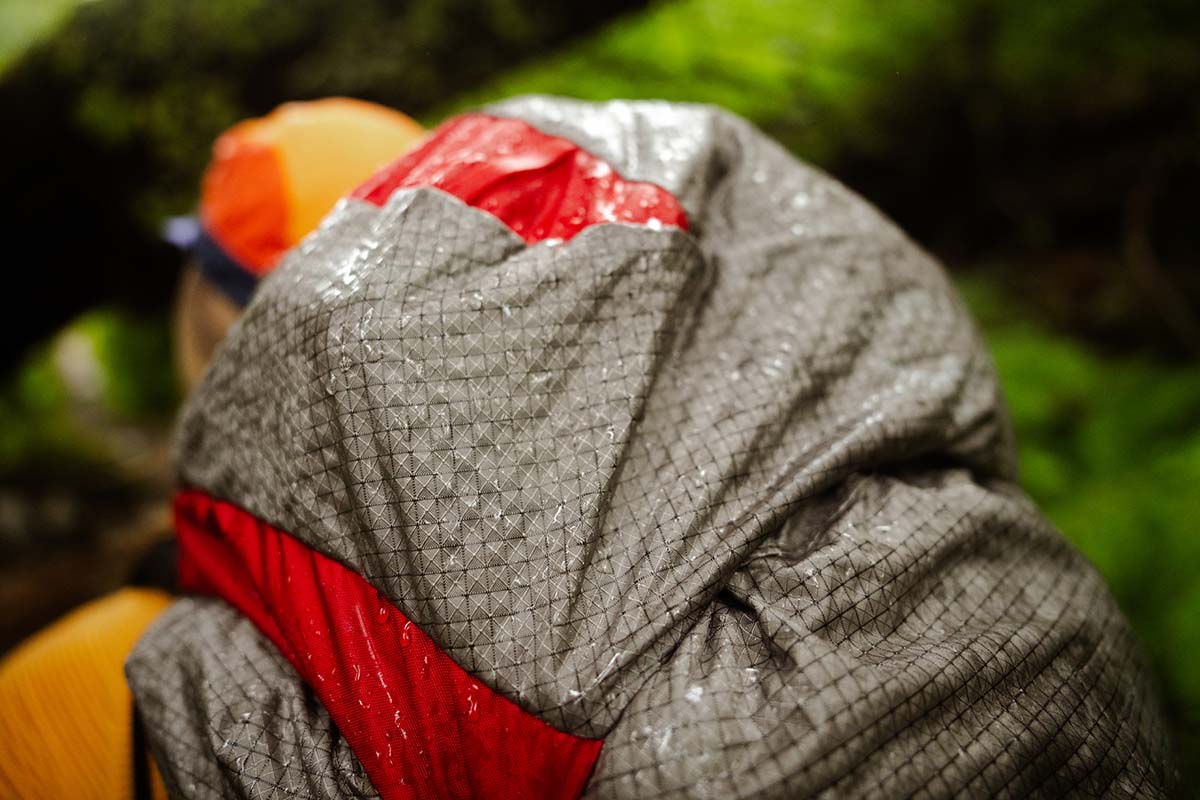
If you don’t have a waterproof backpack, we recommend taking extra steps to ensure your gear stays dry and protected. Some packs come with a built-in rain cover that stashes neatly away when not in use. It’s also possible to purchase a cover separately (we like the REI Duck's Back Raincover), but keep in mind that these can allow moisture to creep in at the sides in blustery weather. If you don’t mind the exterior of your pack getting wet, you can also opt to protect items from the inside by lining the interior with a trash compactor bag or dedicated pack liner, or by utilizing waterproof stuff sacks for gear storage.
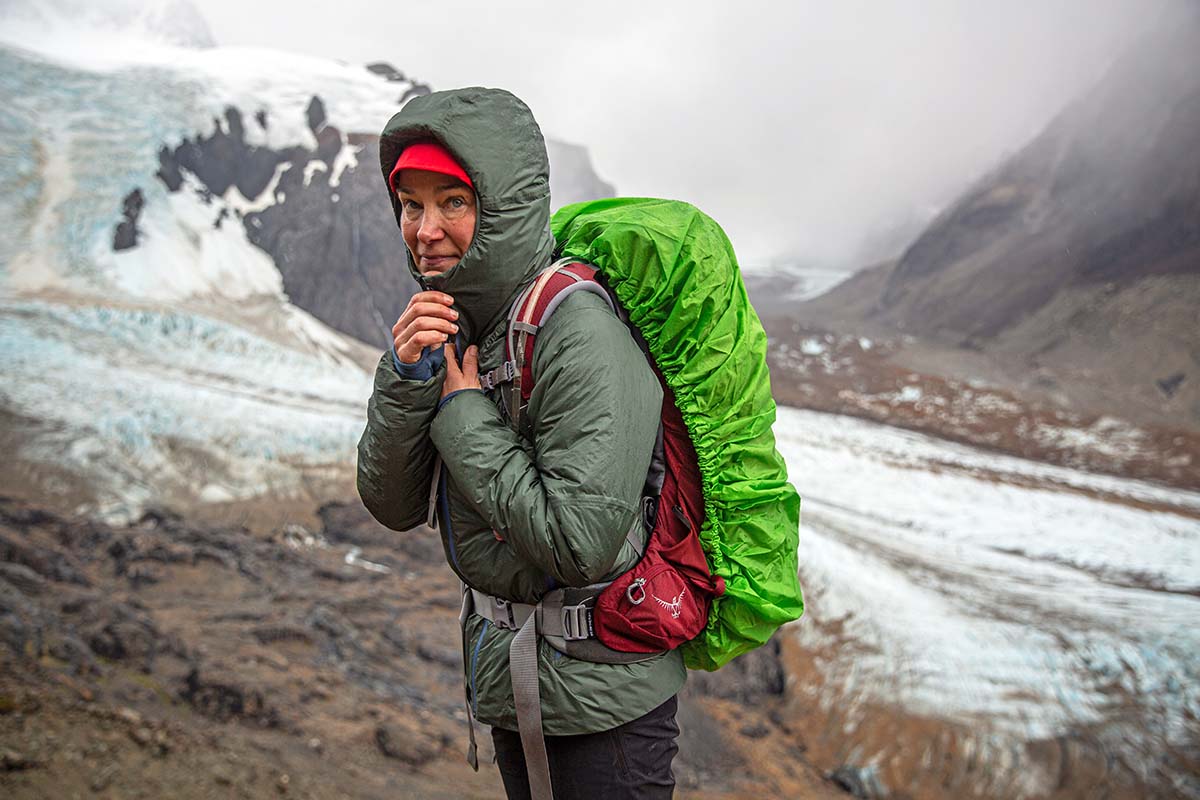
It doesn’t matter how much padding or suspension your pack has—it won’t be comfortable if you don’t size it correctly. Many packs come in a women’s version, which generally feature shorter torso lengths than men’s packs, shoulder straps and hipbelts contoured specifically to fit a female shape, and—of course—dedicated colorways. The exception to this rule is ultralight packs like the Hyperlite, Gossamer Gear, ULA, and Black Diamond models above, which are only offered in unisex models. However, thanks to their deeper range of size and customization options (for the Ultra Circuit 68, ULA lets you choose between four torso lengths, six hipbelt sizes, and two types of shoulder straps), these packs ensure a great fit for bodies of all sizes.
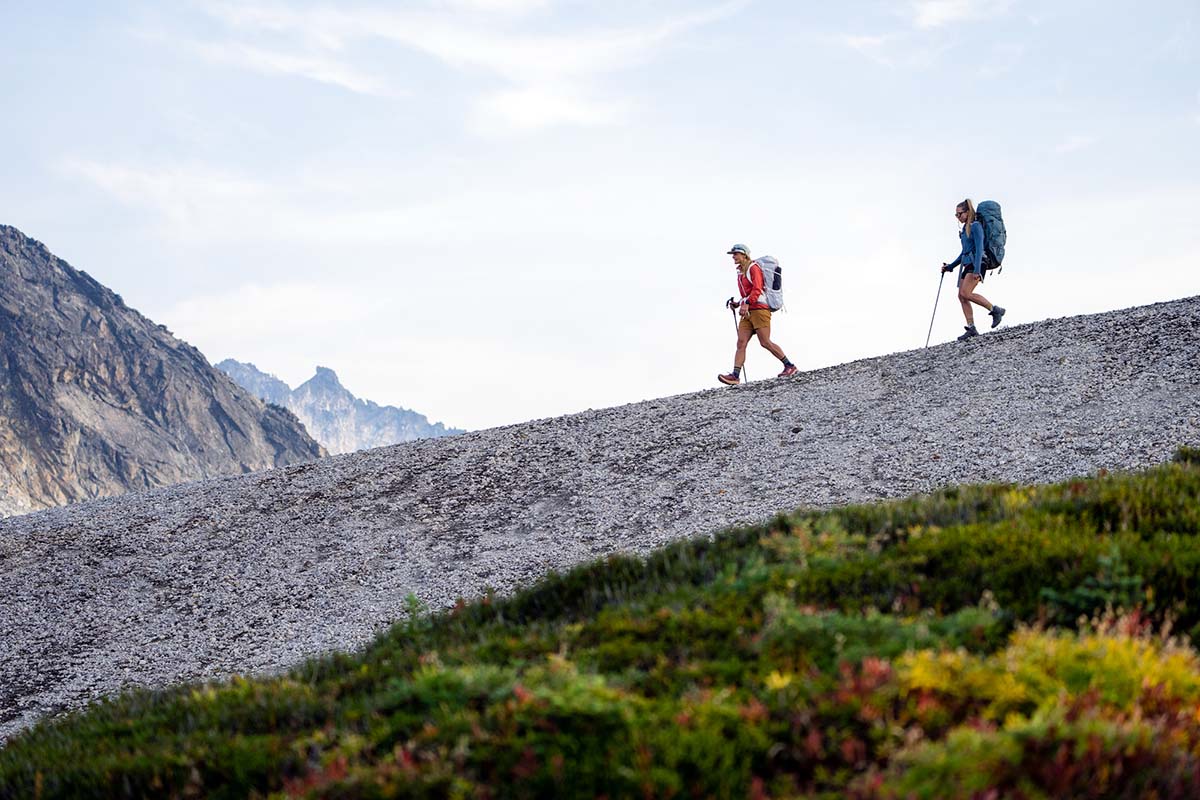
Most traditional backpacking packs are offered in two or three sizes, which vary most in terms of torso and hip measurements. Sizes are most often differentiated by their torso length; for example, the Osprey Aura AG LT comes in sizes extra small/small and medium/large, with the former built to fit those with torso lengths of 13 to 17 inches and the latter for 16- to 20-inch torsos. Most hipbelts are so adjustable that you’re safe to size your pack based on torso measurement alone; for example, the Osprey Aura AG LT’s hipbelt has a 26- to 50-inch range. That said, if your body doesn’t fit the mold for “standard” proportions, there are designs that allow you to swap in a different sized hipbelt, including the ULA Equipment Circuit, Gossamer Gear Mariposa, and REI Co-op Flash.
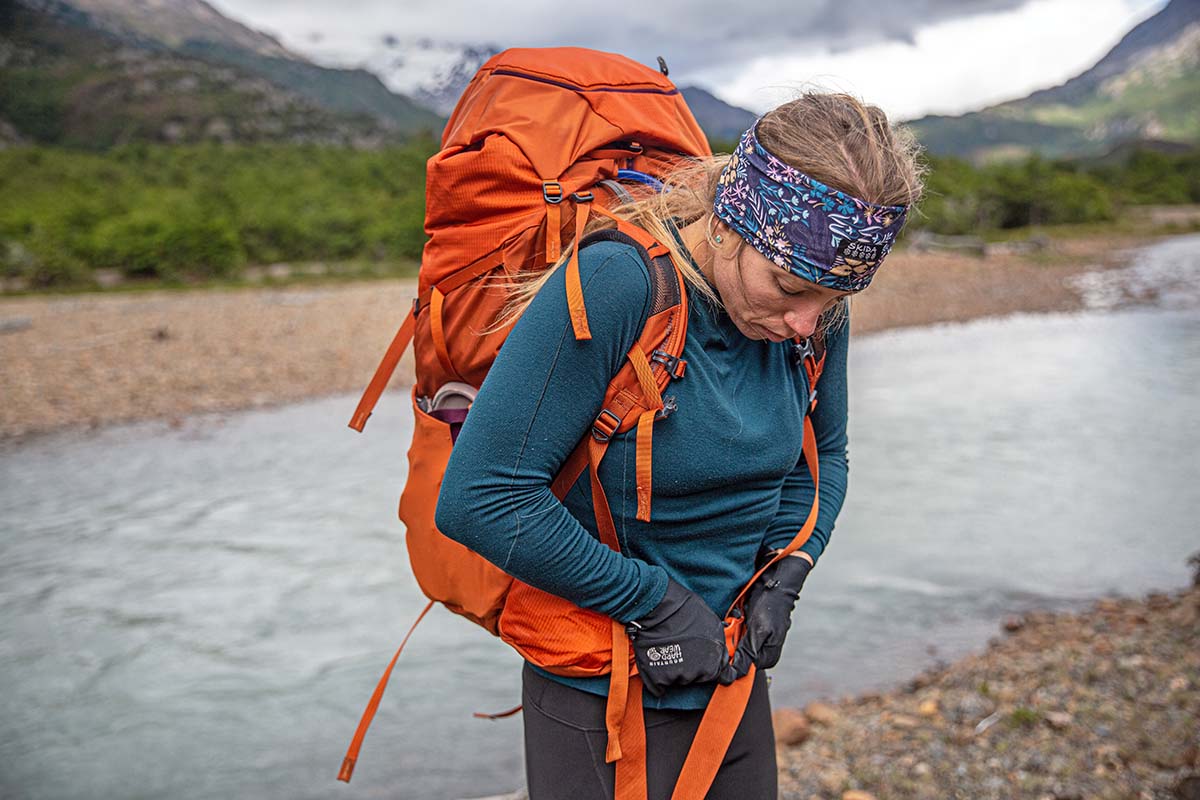
A final consideration is whether or not a pack features an adjustable torso length. This is standard fare on feature-rich backpacking packs—most offer at least 4 inches of torso adjustment by way of integrated velcro or ladder systems—and an especially great feature for growing bodies or if you want to share your pack between friends and family members. However, adjustability can be cut in the name of weight savings. Generally, packs that have fixed torsos come in more sizes (the Gregory Facet is offered in three sizes, while the Hyperlite Southwest comes in five), and we’ve been surprised by our success nailing a good fit with most of these models. It especially helps to educate yourself on how to correctly adjust your pack: With the load lifters loosened (the straps that secure the top of the shoulder straps to the pack), snug the hipbelt first, then the shoulder straps. Then, give the load lifters a tug so that the shoulder straps are flush with your body and the pack flush against your back. Finally, secure the sternum strap. For more on this, see our Backpack Fit and Sizing Guide.
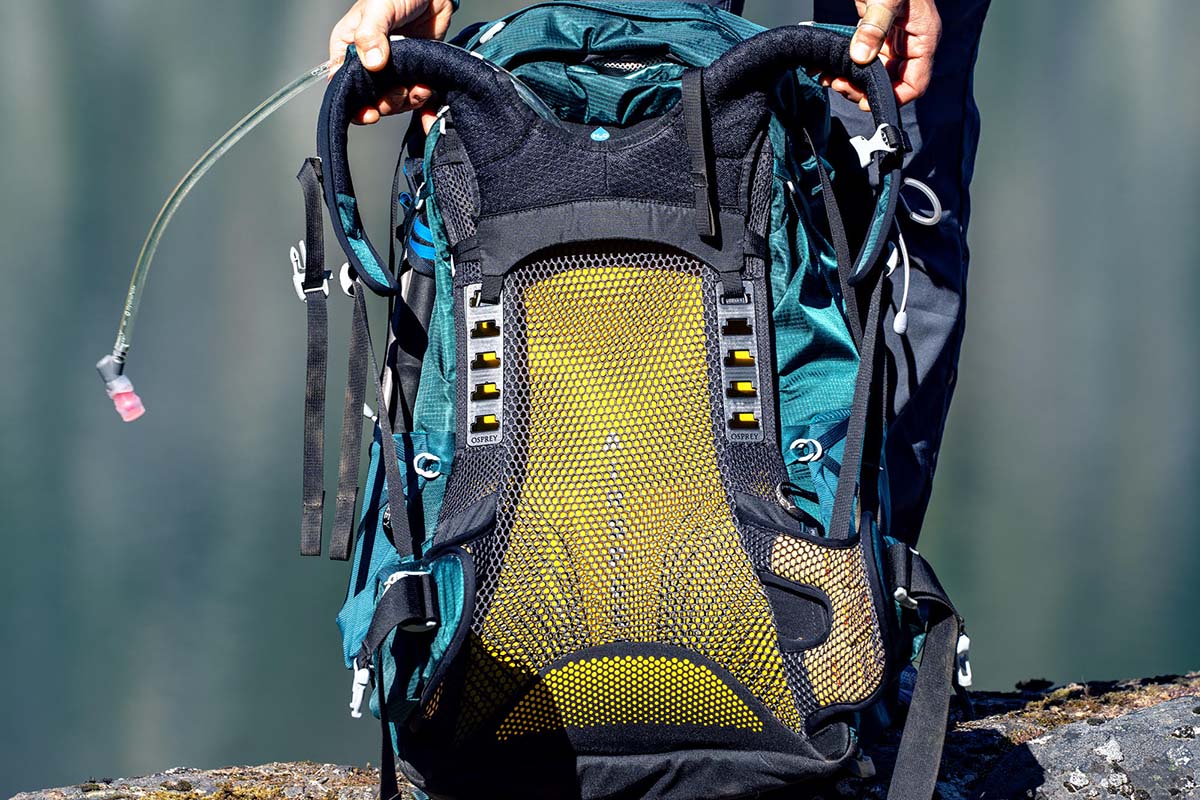
Plus-Size Backpacks
Backpackers come in all shapes and sizes, and a growing number of brands are rising to the occasion with dedicated plus-size versions of some of their core models. Gregory and Osprey are at the forefront, with several designs available in extended sizing. And importantly, these brands didn’t just make the packs bigger—they took an intentional approach by widening the distance between the shoulder straps, tweaking the pocket positioning, and allowing for ample adjustments to accommodate a range of body types. Plus-size options are still fairly limited, but we’re excited to see more of our favorite packs become available to a wider range of hikers and backpackers (for more info, you can check out Osprey’s Extended Fit Collection and Gregory’s Plus Sizing).
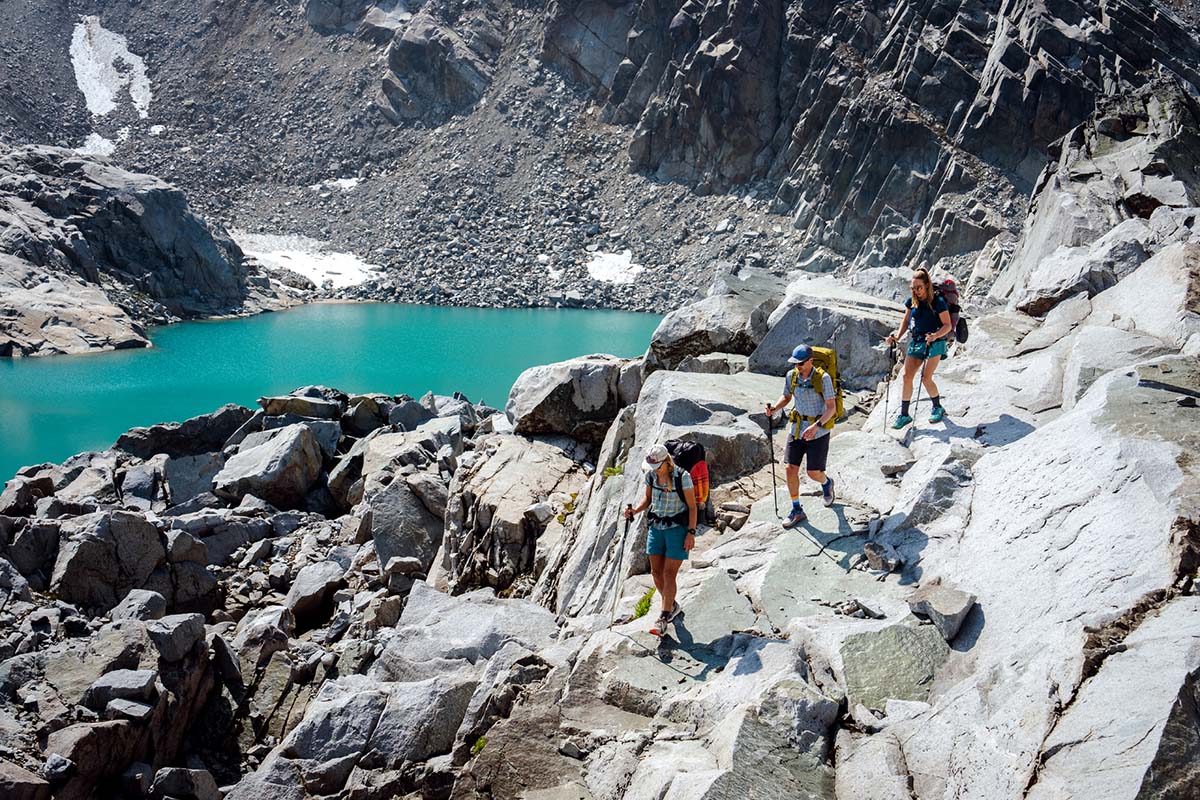
Our impact on the environment has never been of greater concern, and we’ve been pleased to see many leading outdoor brands step it up with more sustainable practices, from sourcing to manufacturing. One key measure is the use of recycled fabrics, with companies like Osprey, Gregory, and Deuter at the forefront. We’re also seeing more and more PFAS-free DWR finishes on backpacks, which forgo the use of per- and polyfluoroalkyl substances—also known as “forever chemicals”—that have been linked to several environmental and health issues. With several states working to ban the sale of items that include PFAS, the outdoor industry is looking for more eco-friendly alternatives to traditional water- and stain-resistant finishes. All told, we’re excited about the changes thus far and look forward to seeing more sustainably built packs on the market and on the trails.
Back to Our Top Women's Backpacking Packs Back to Backpacking Pack Comparison Table